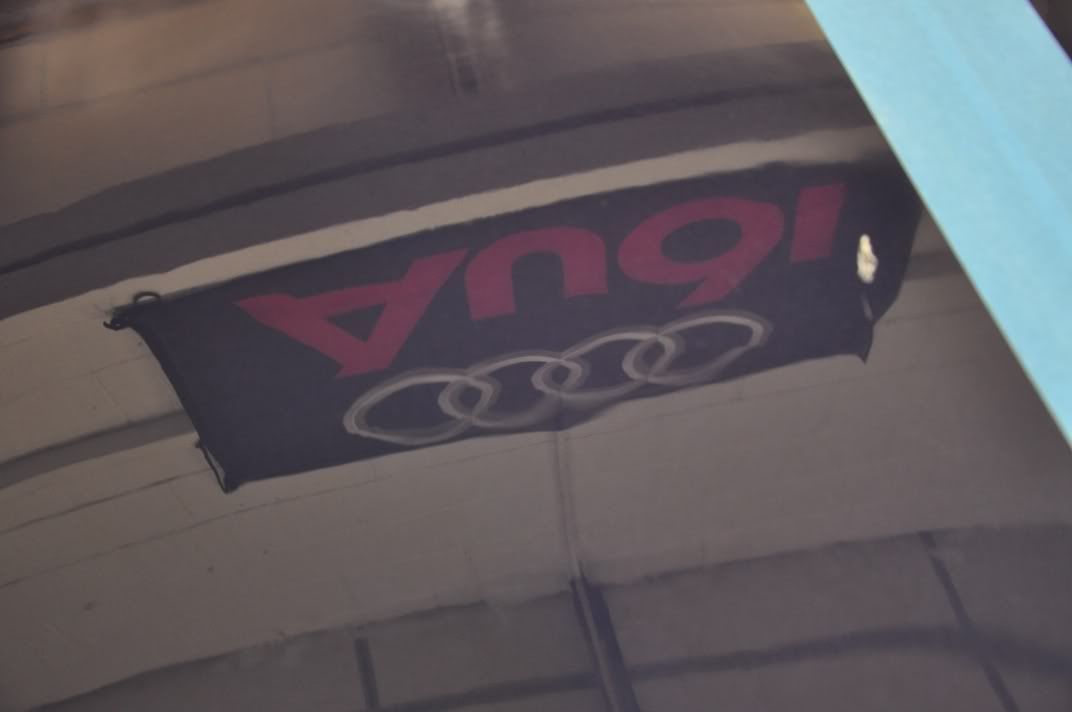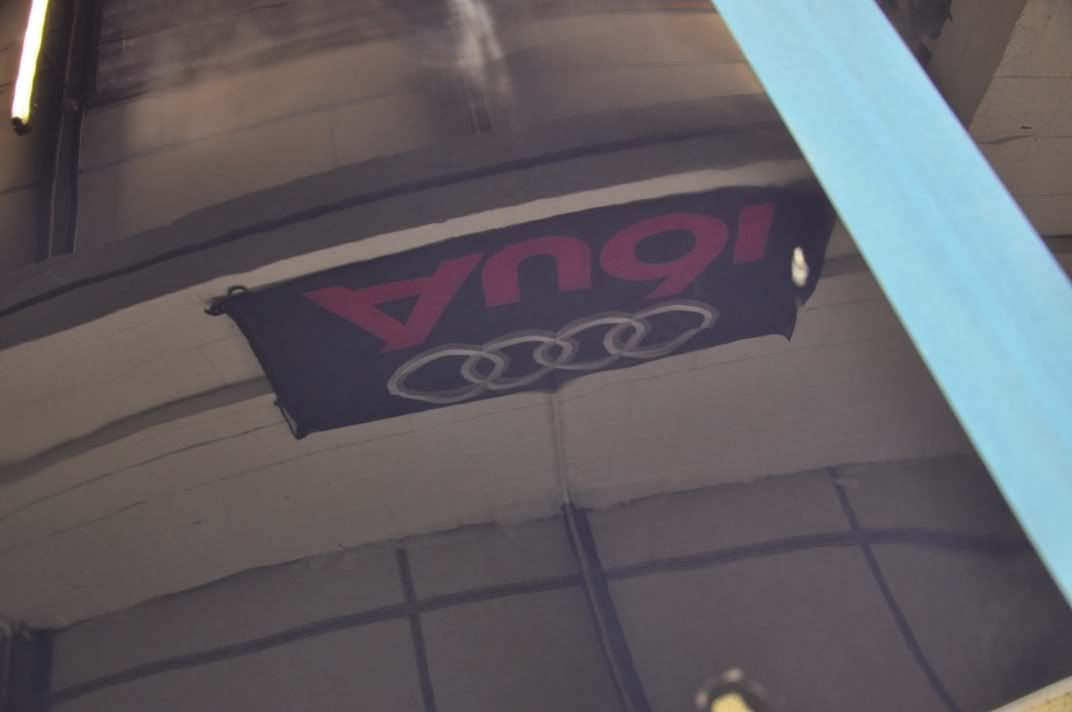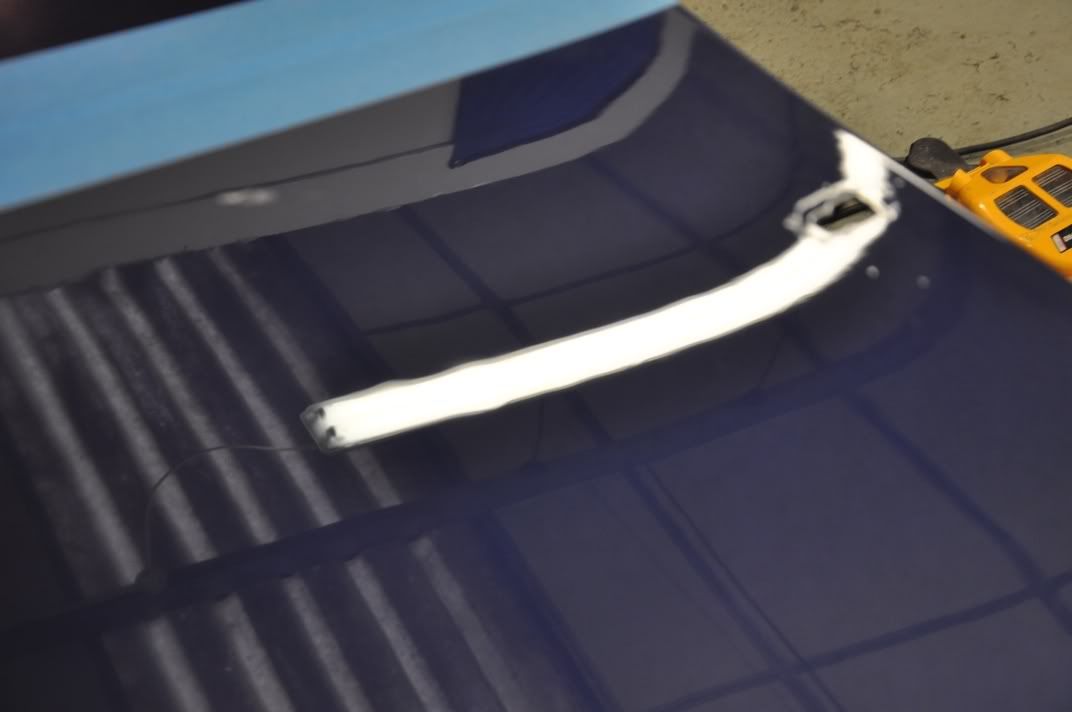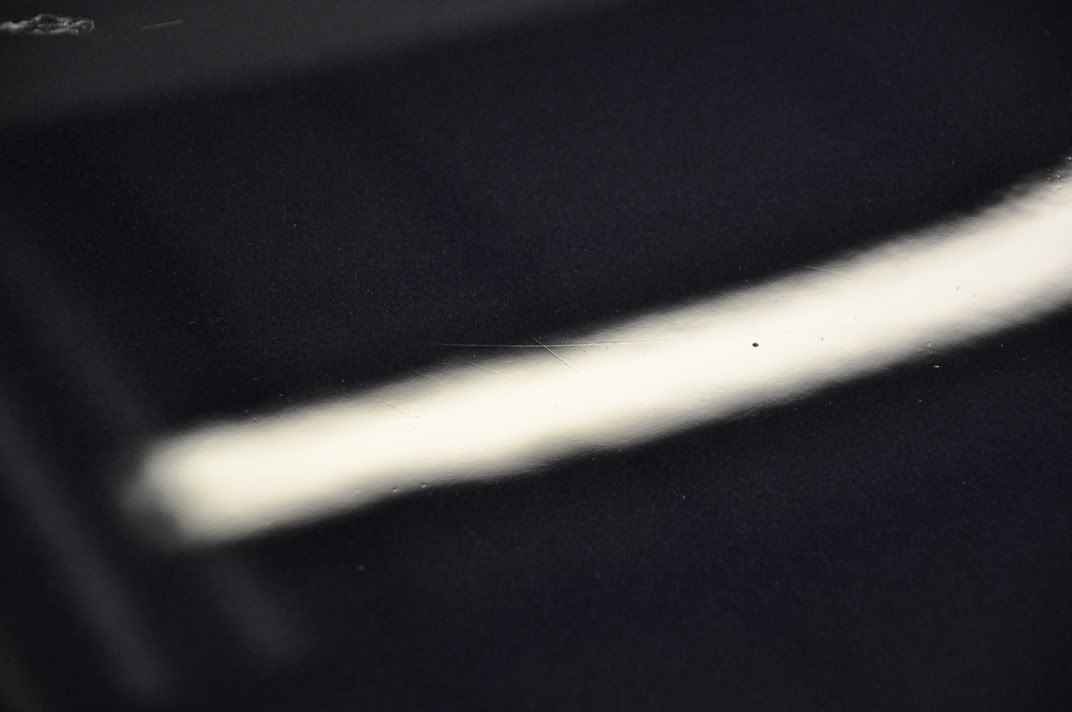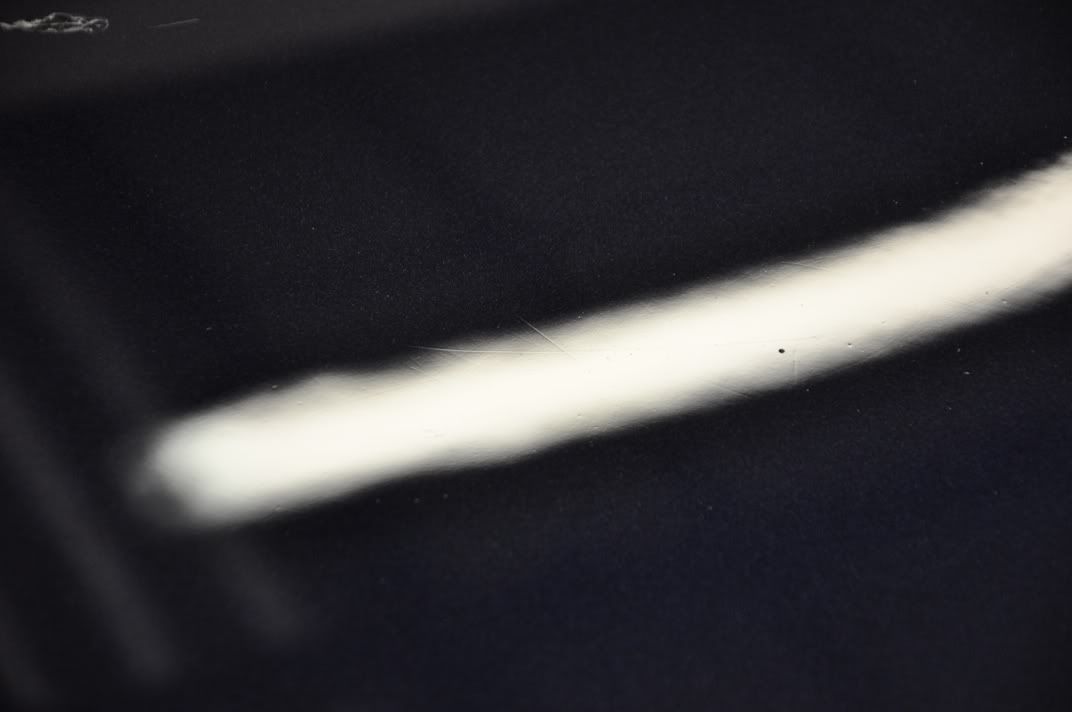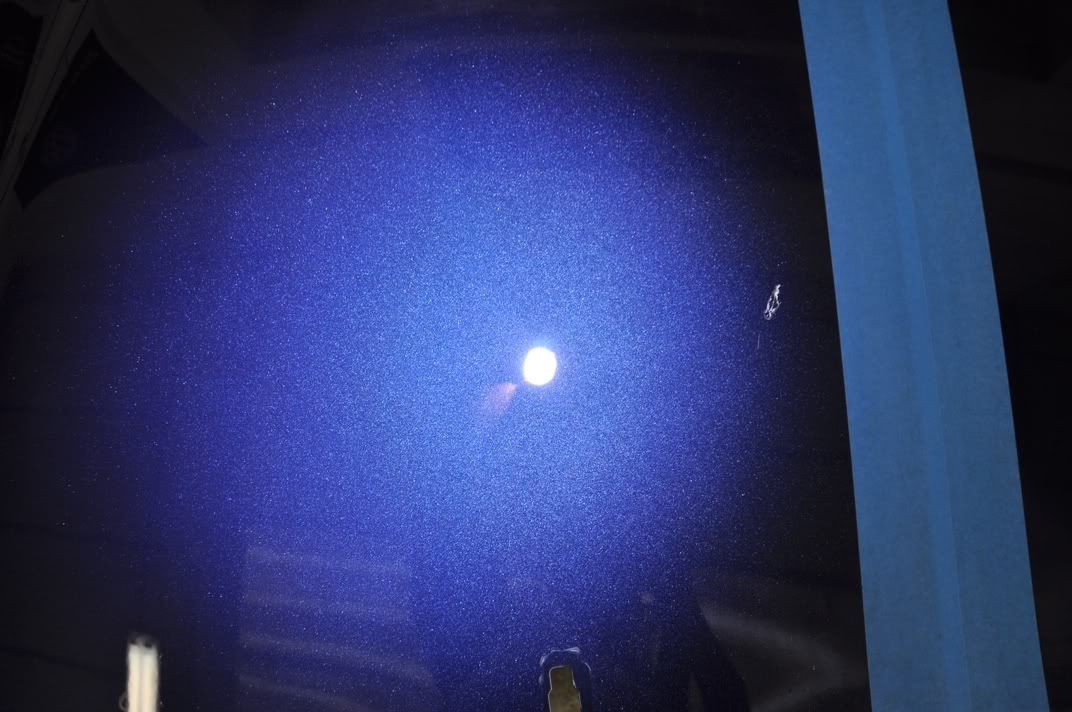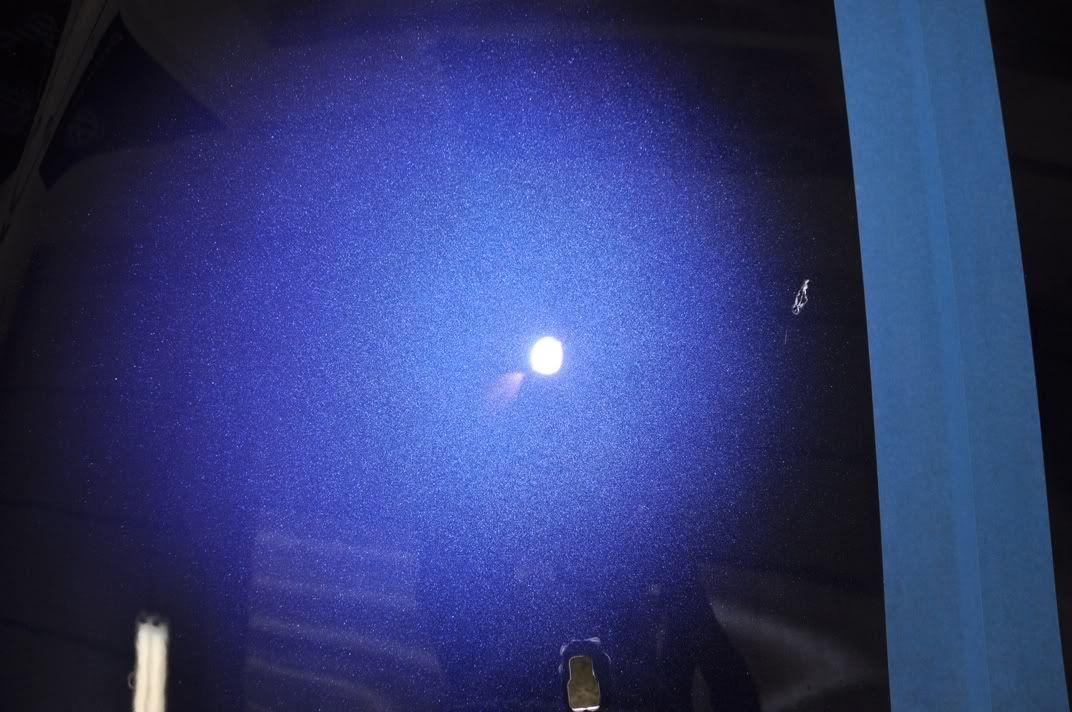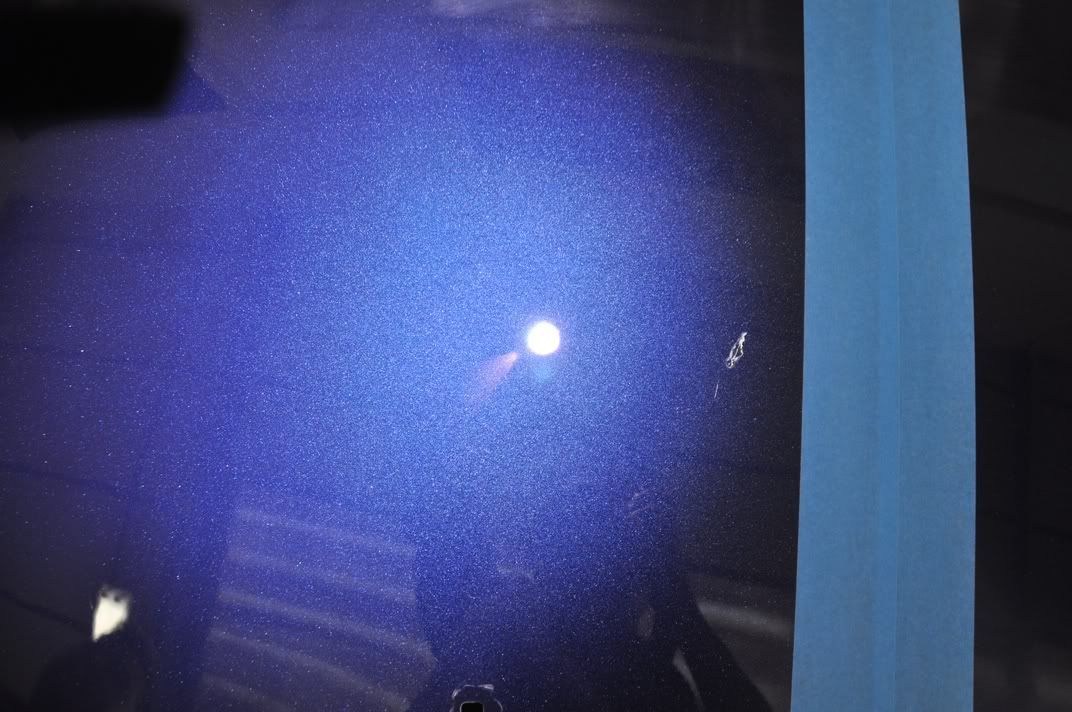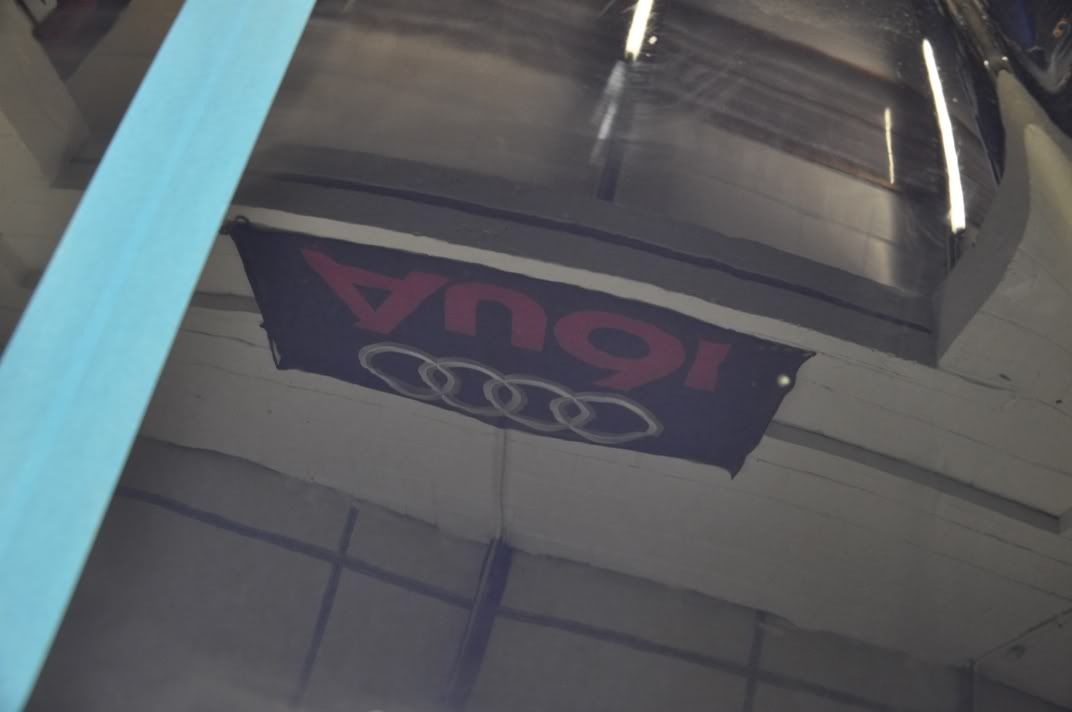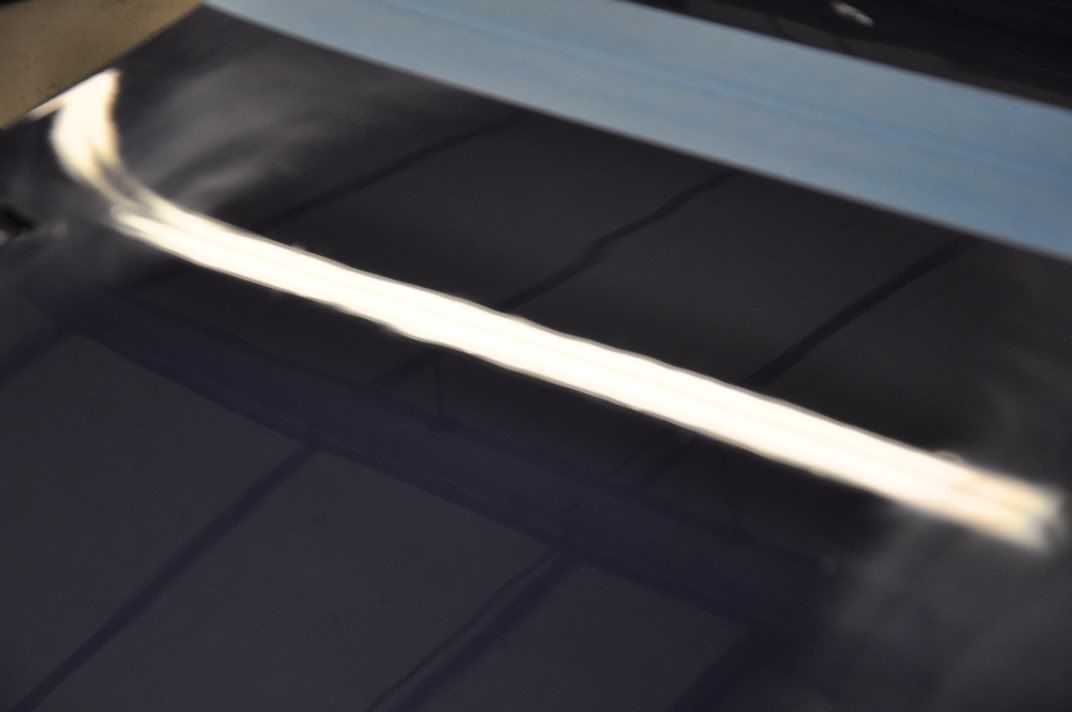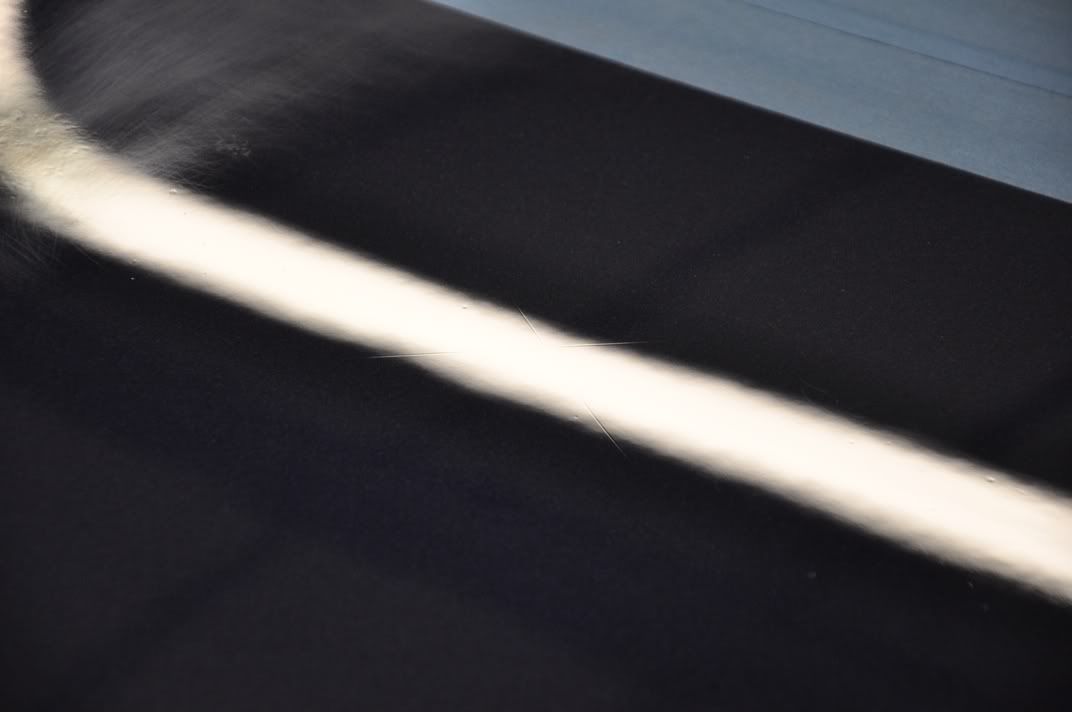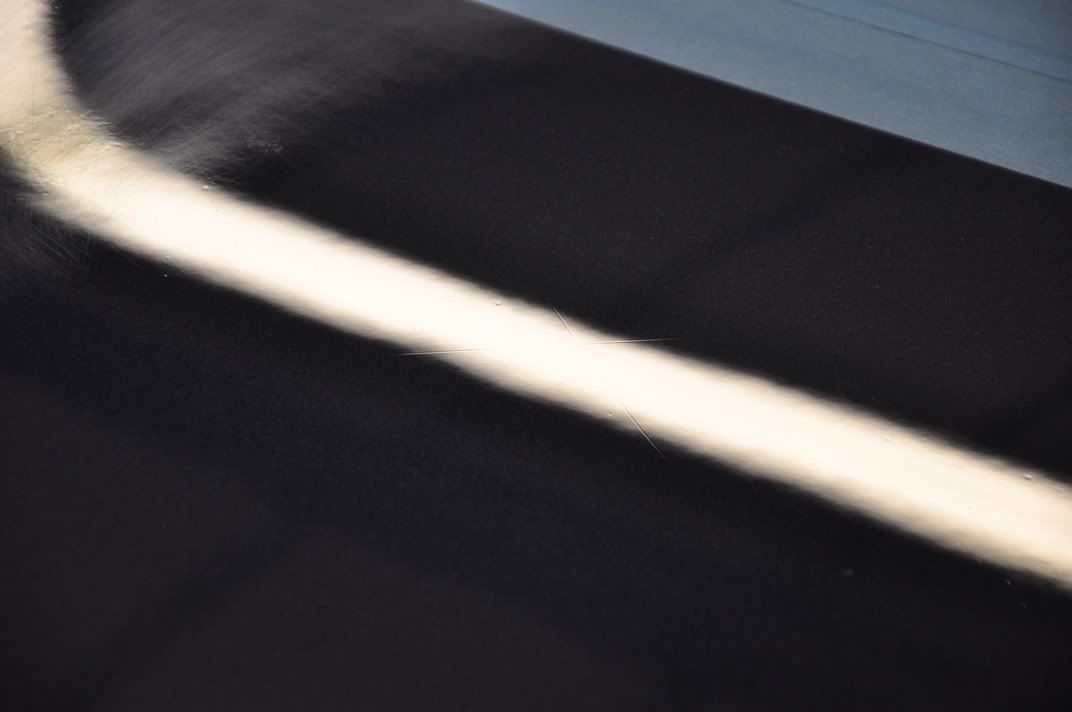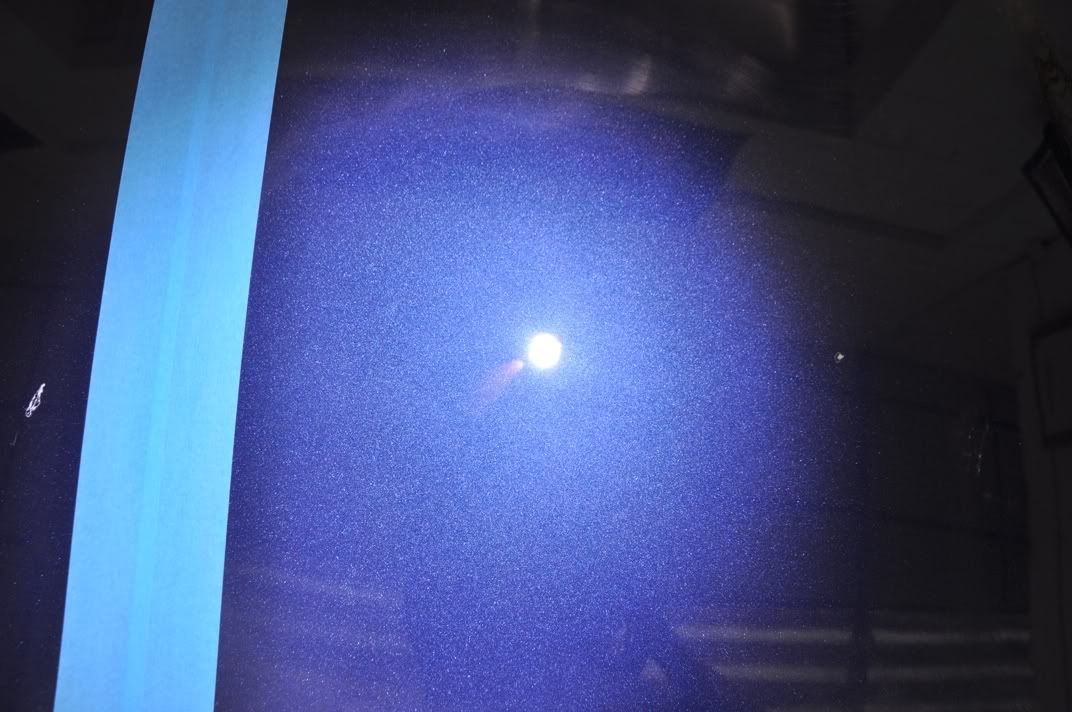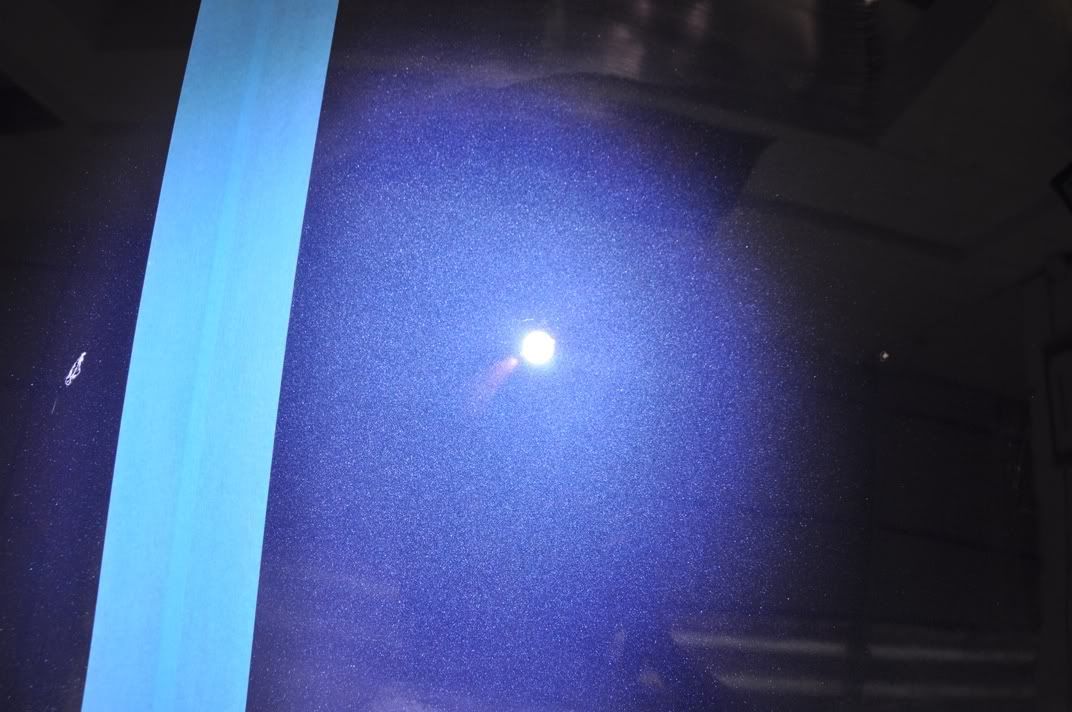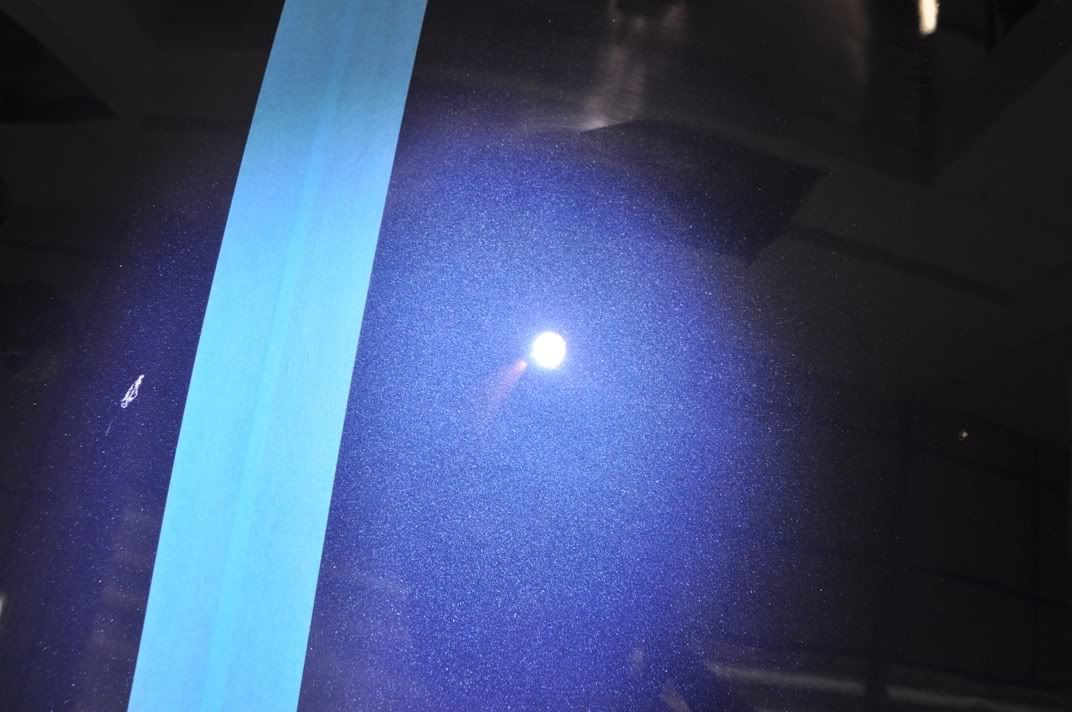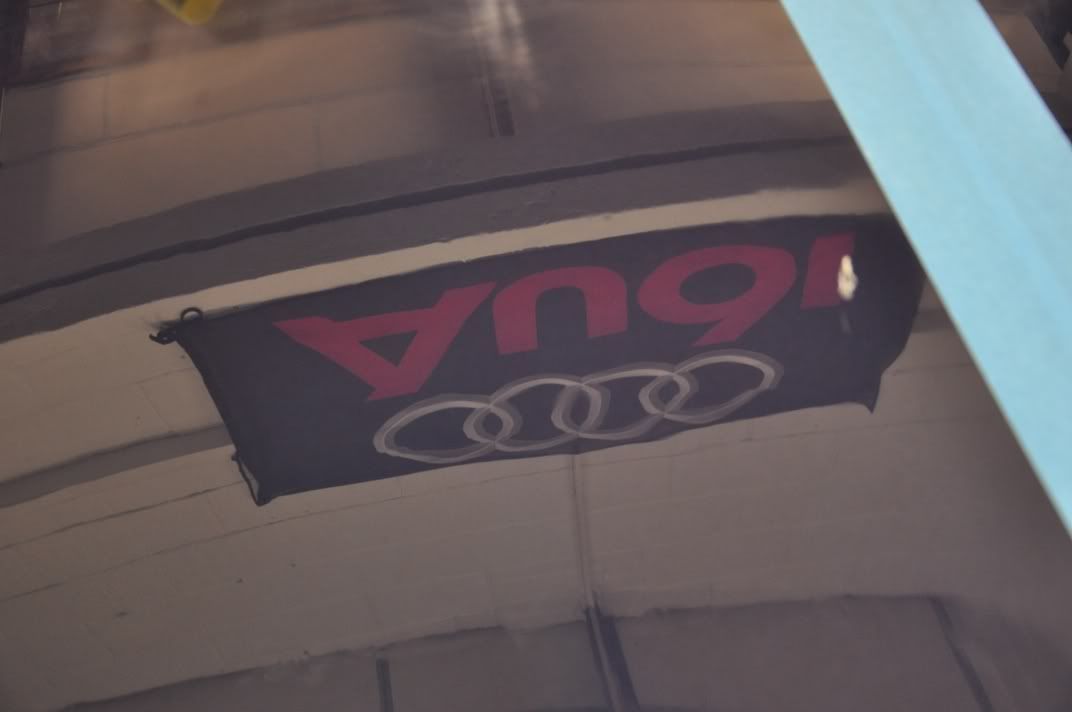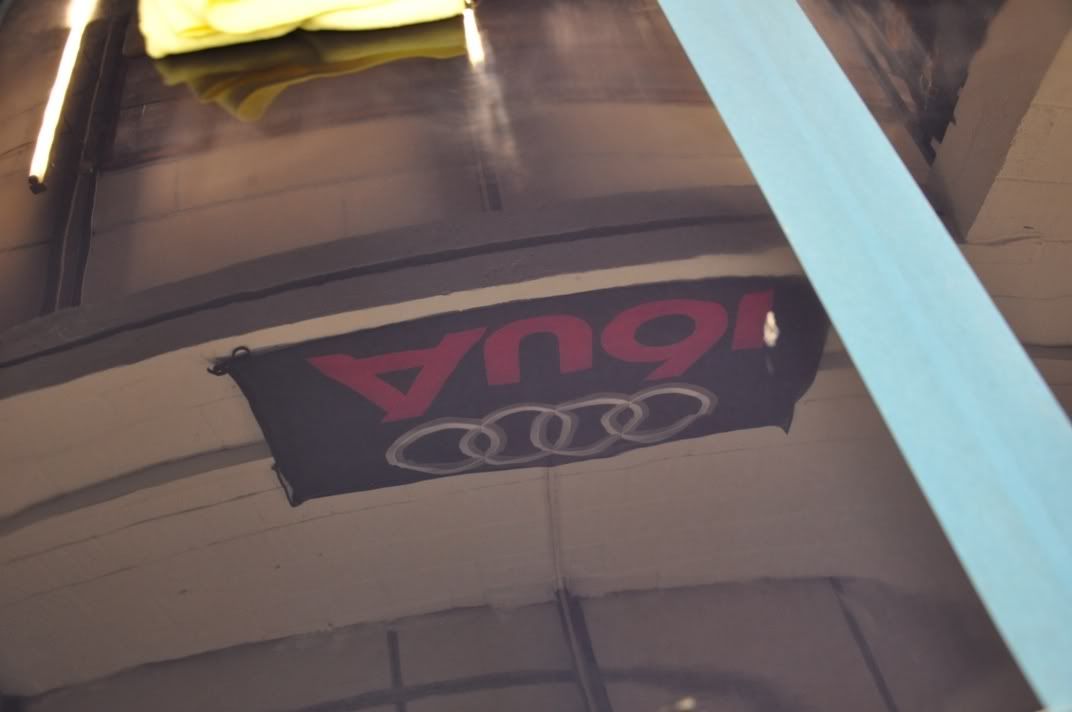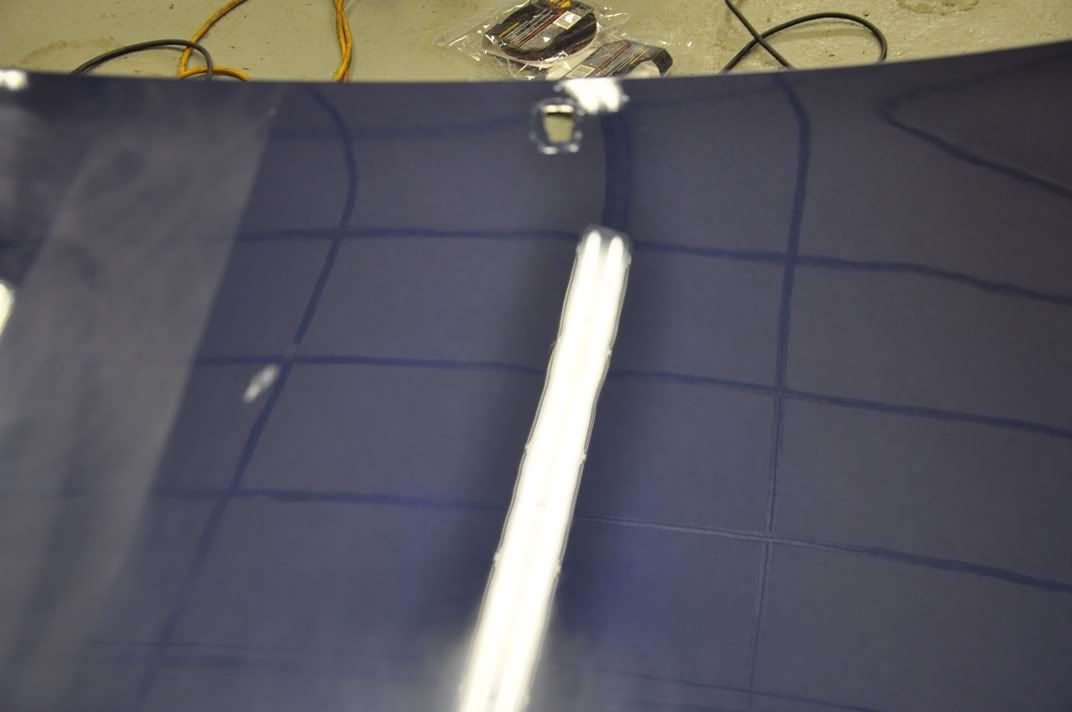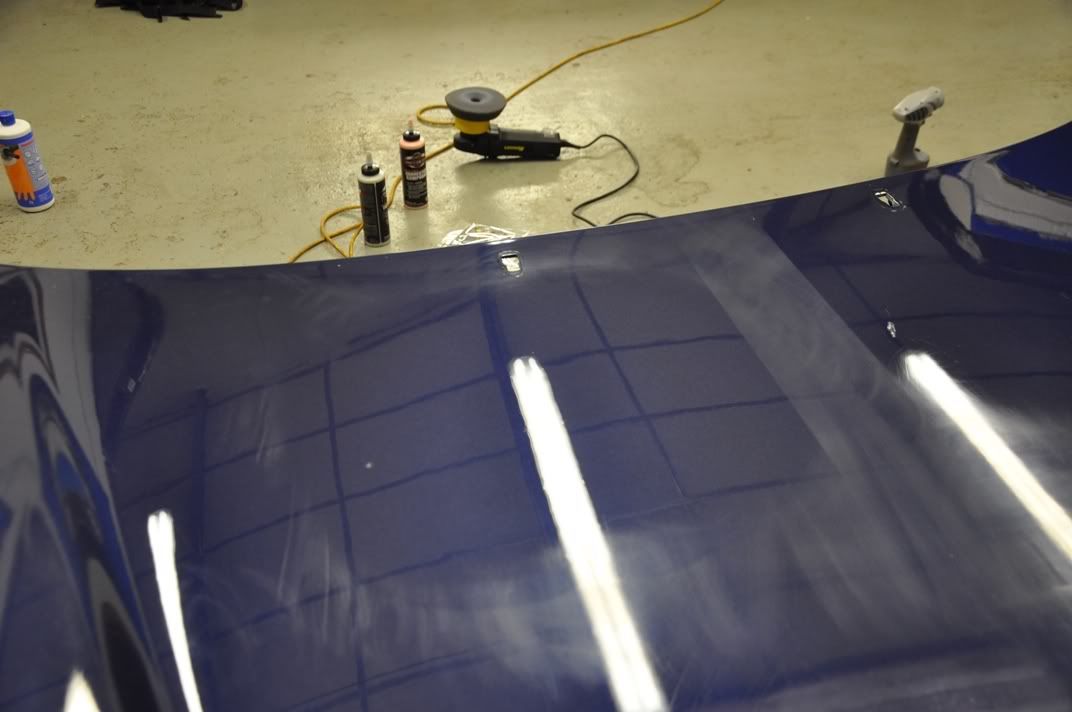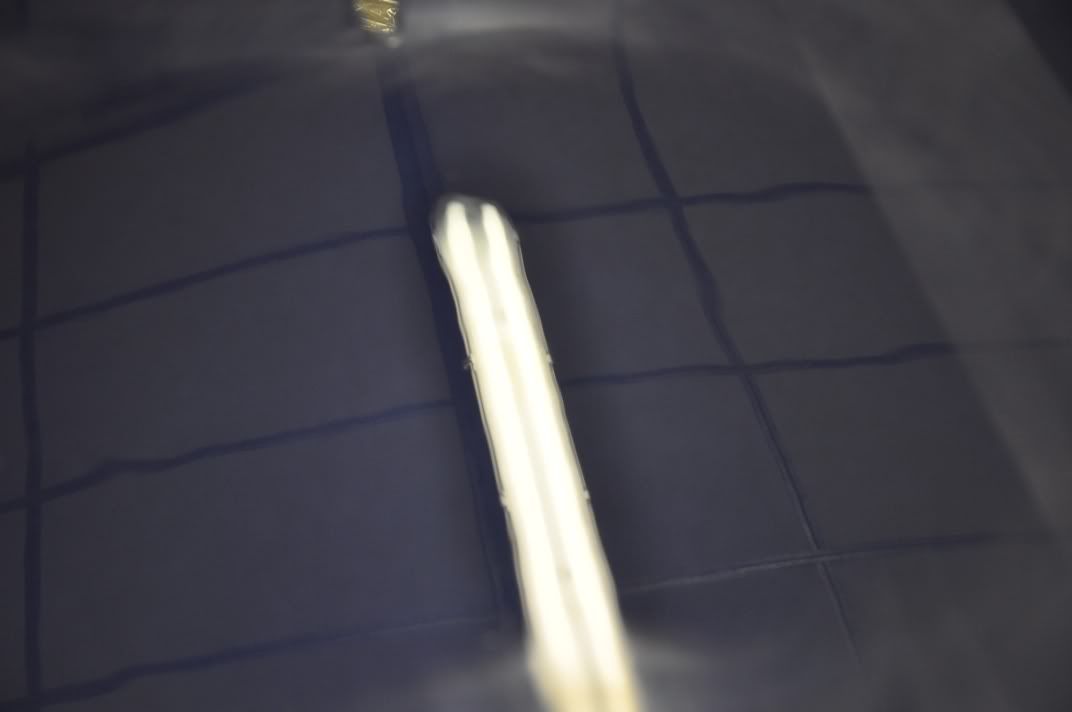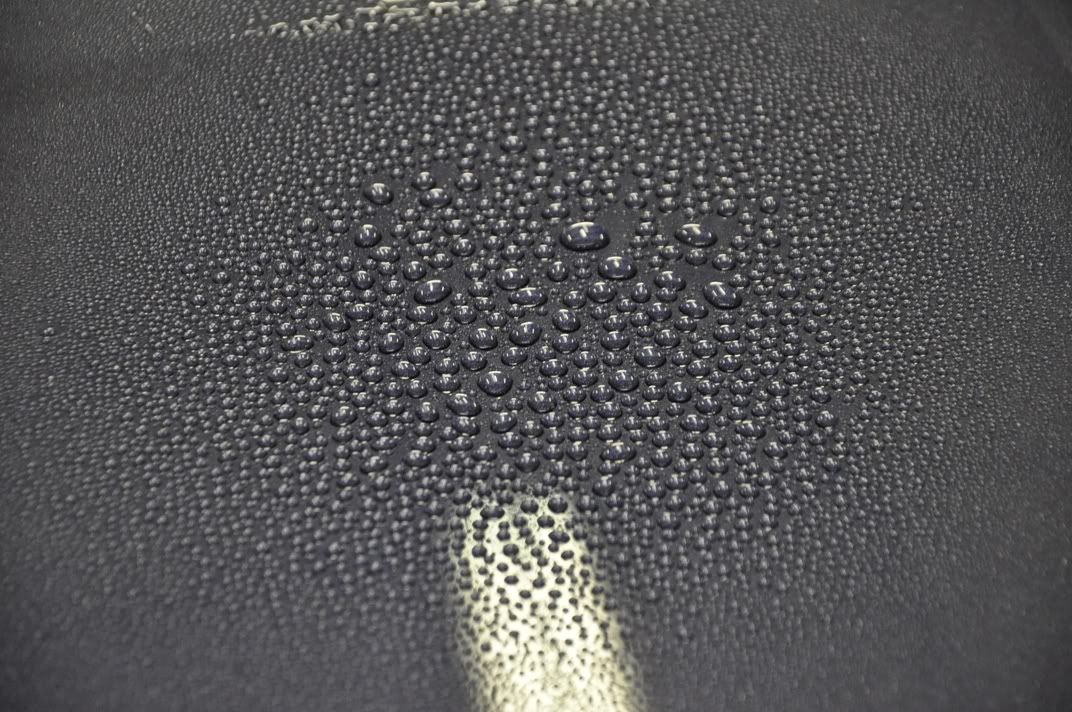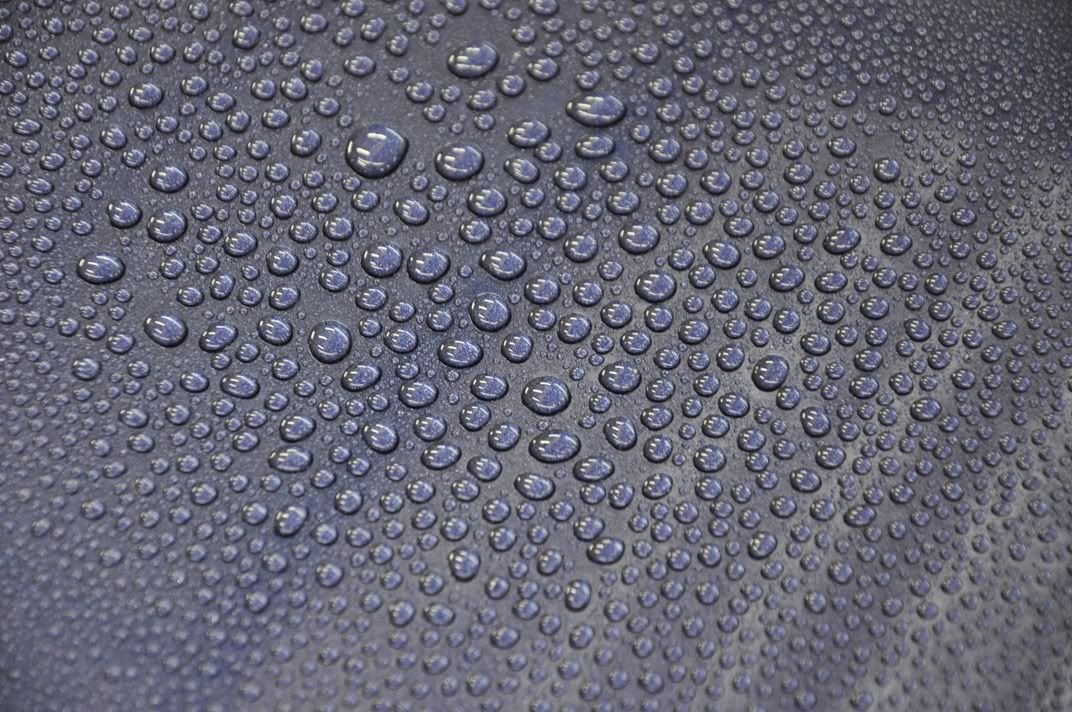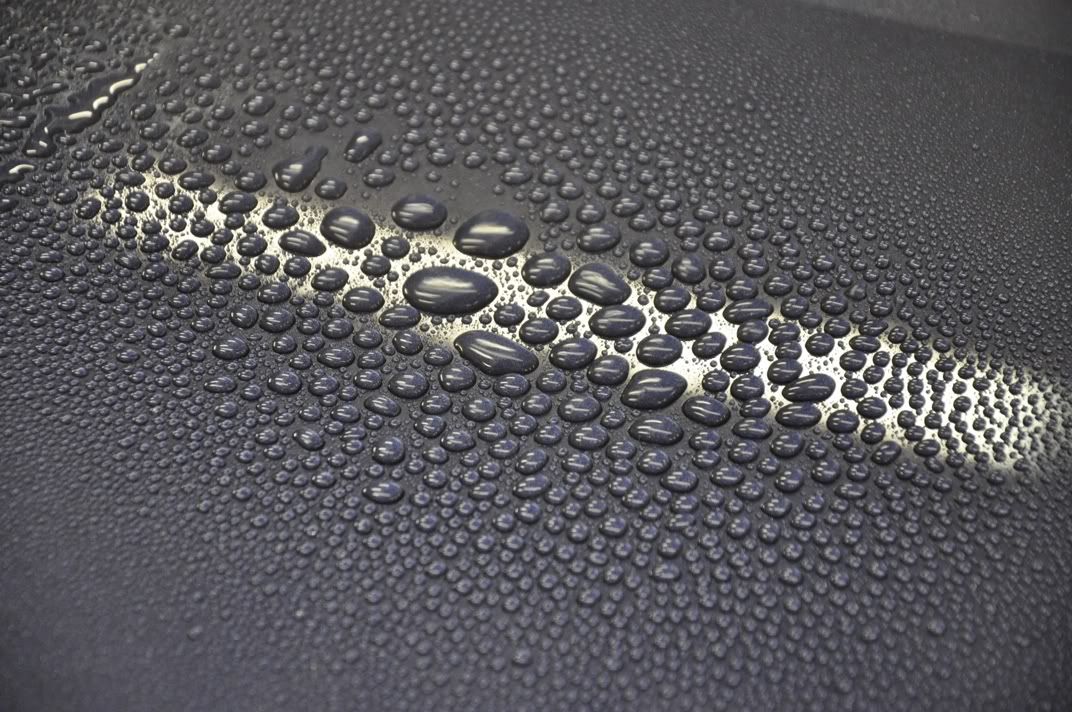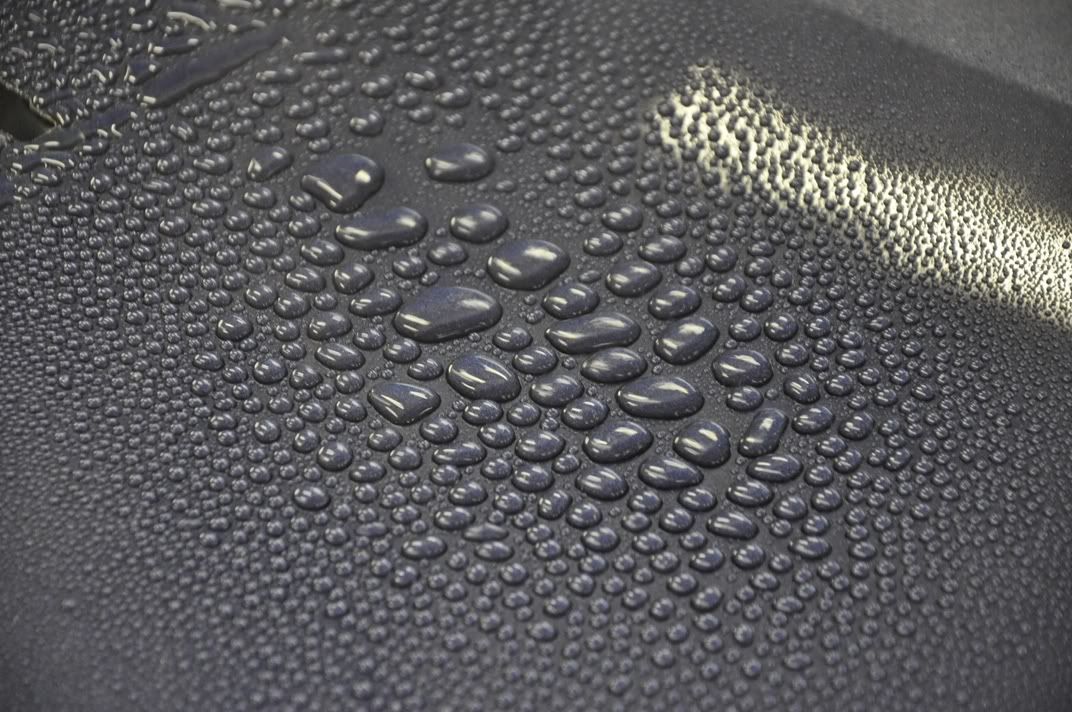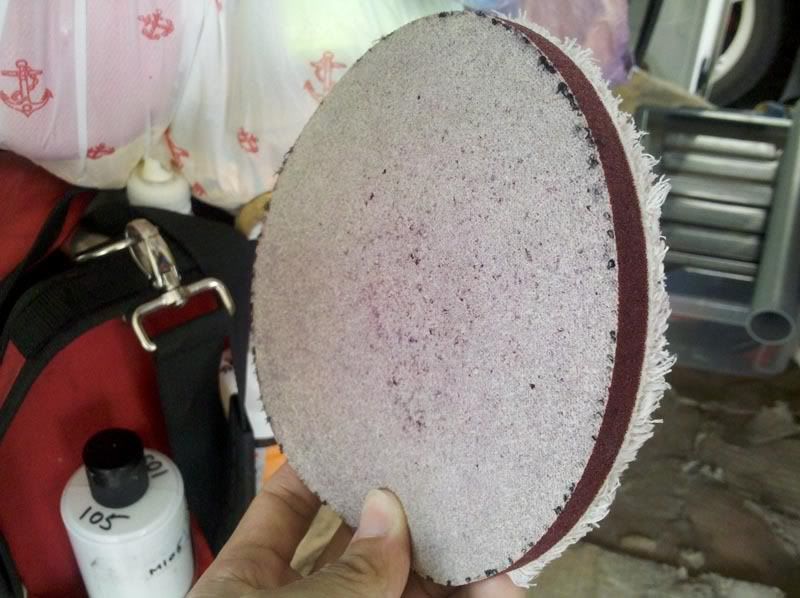imported_Dave KG
New member
The new Meguiars microfibre DA correction system is getting more and more air time now as the system is being used by more people and the same messages seem to be coming out - speed of correction and the movement of the level of correction capable in given times by DA. So we thought it was about time to challenge the Meguiars system in a head to head with how we would have corrected by DA before it existed! To see what the differences really are 
So - take one Mercedes blue bonnet, and marr it with a brush and some grit, and a key to set the challenge:
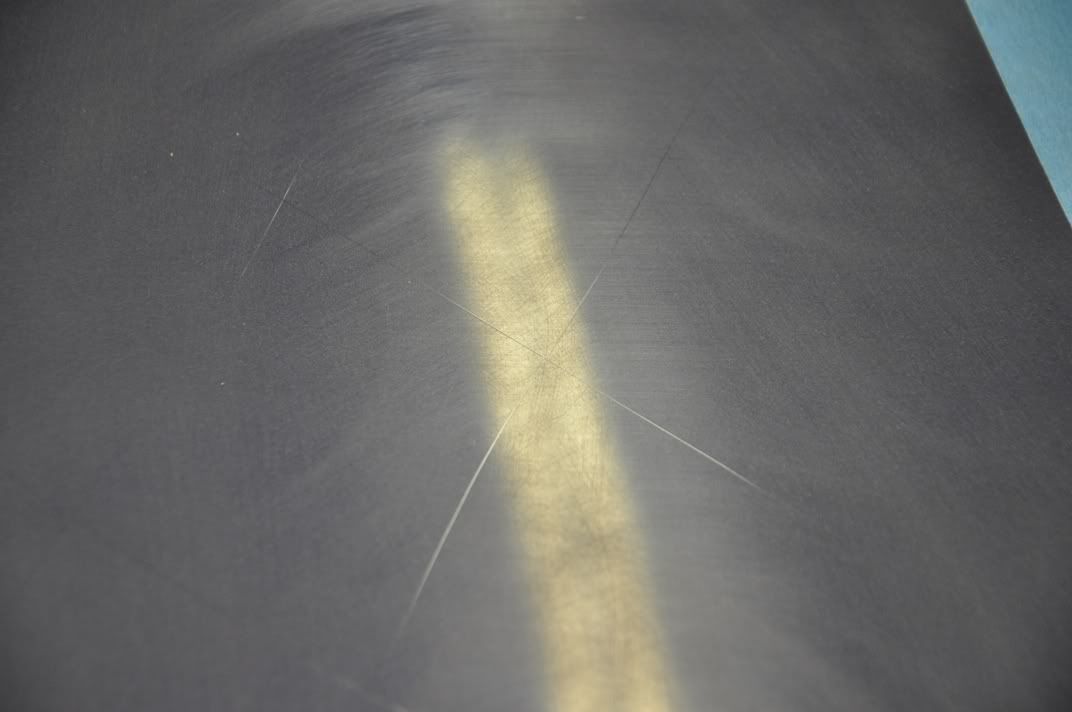
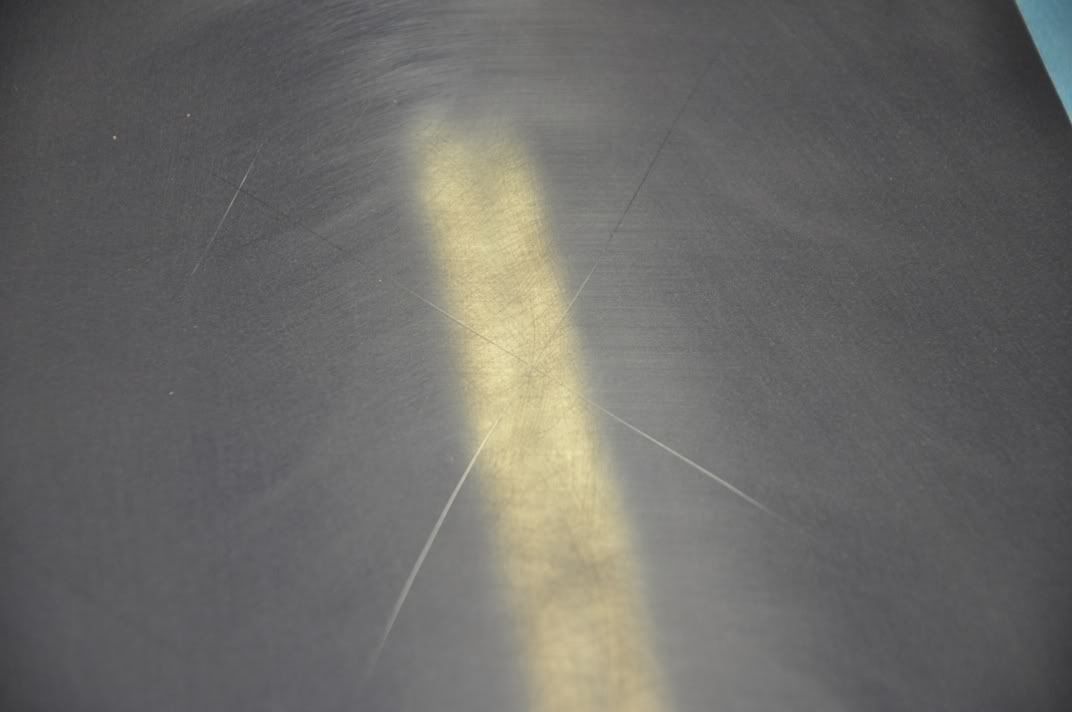
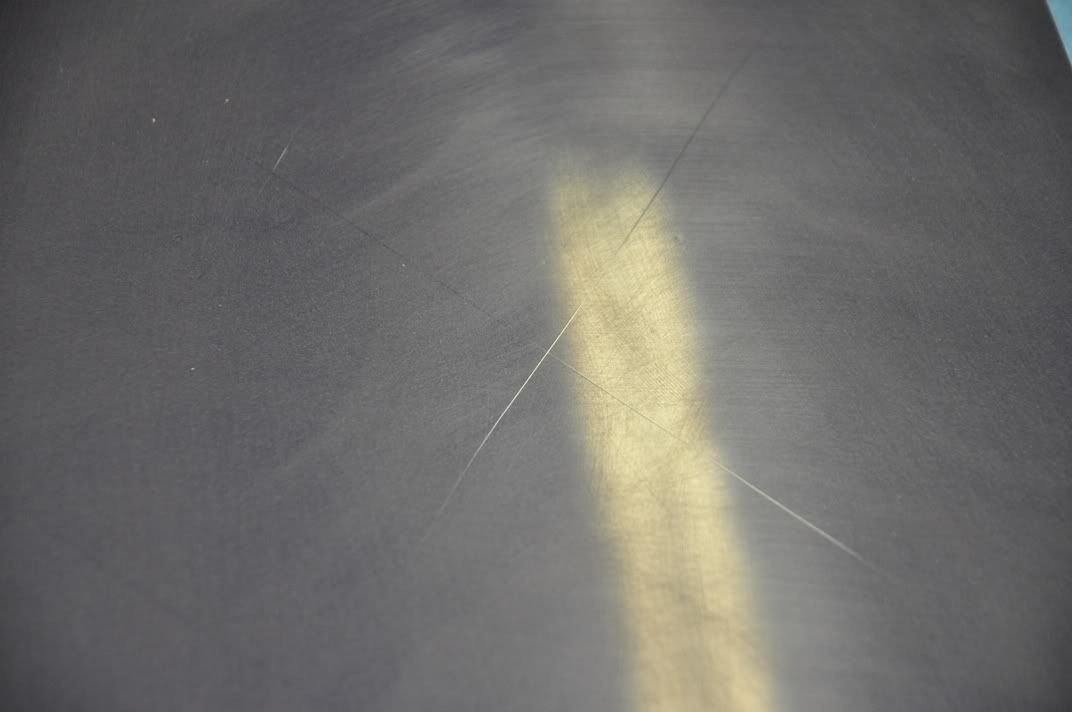

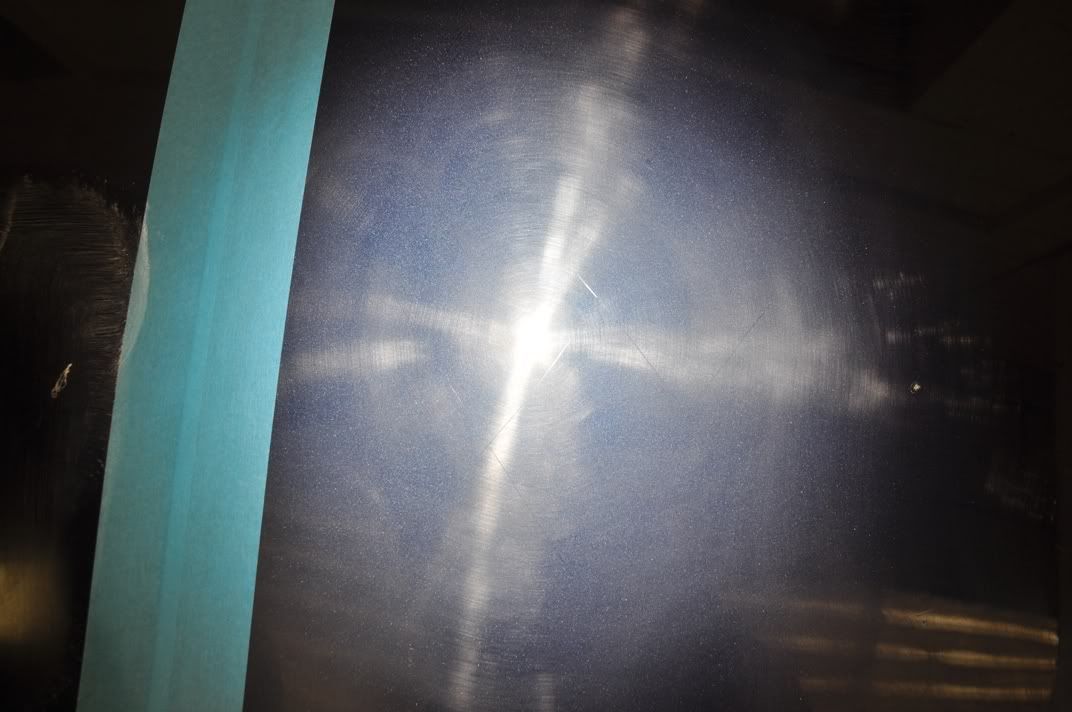
I think this sets the heavy correction challenge quite well - 2000 grit sanding marks, grit brush and deep RDS inflicted by a key, so a wide variety of severe marring to sort out.
Menzerna S100 Power Gloss on DRC1000 Yellow Cutting Pad
Traditionally, working by DA, heavy correction would be achieved using a cutting foam pad such as the DRC1000 Yellow, and an aggressive compound. Chosen here is Menzerna S100 Power Gloss, in our experience, Menzerna compounds seem to have the edge on a DA, the abrasives seem to suit the oscillating motion of the machine more than those of Fast Cut for example. The video below shows a typical correction set with Menzerna on foam, Gordon using speed 2 to spread and working up to speed 5 - 5.5 on the DAS-6 Pro and using moderate pressure to achieve the correction:
DSC 0012 - YouTube
Note: fast passes at slow speed to spread and then slow hand movements with the machine while breaking the compound down and an overall work time of circa 5 minutes.
This achieved the following results, first of all viewed under the striplight and the camera focussed on the paint surface to give a true indication of the level of correction of the deeper marks and RDS (look for the X marks the spot ):
):
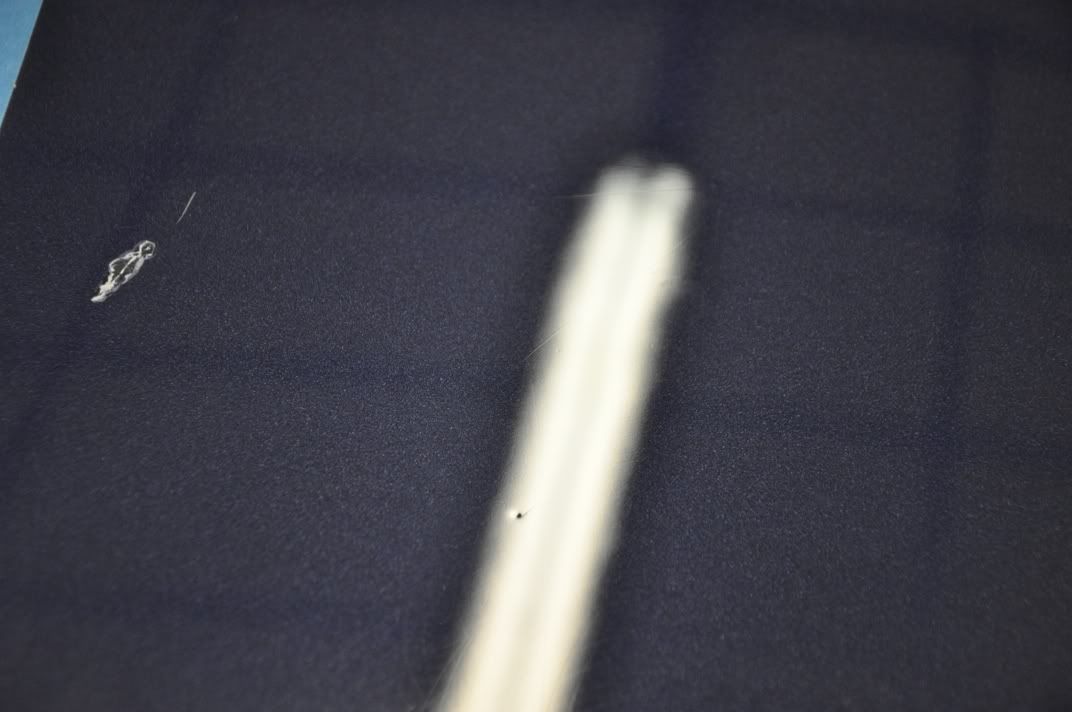
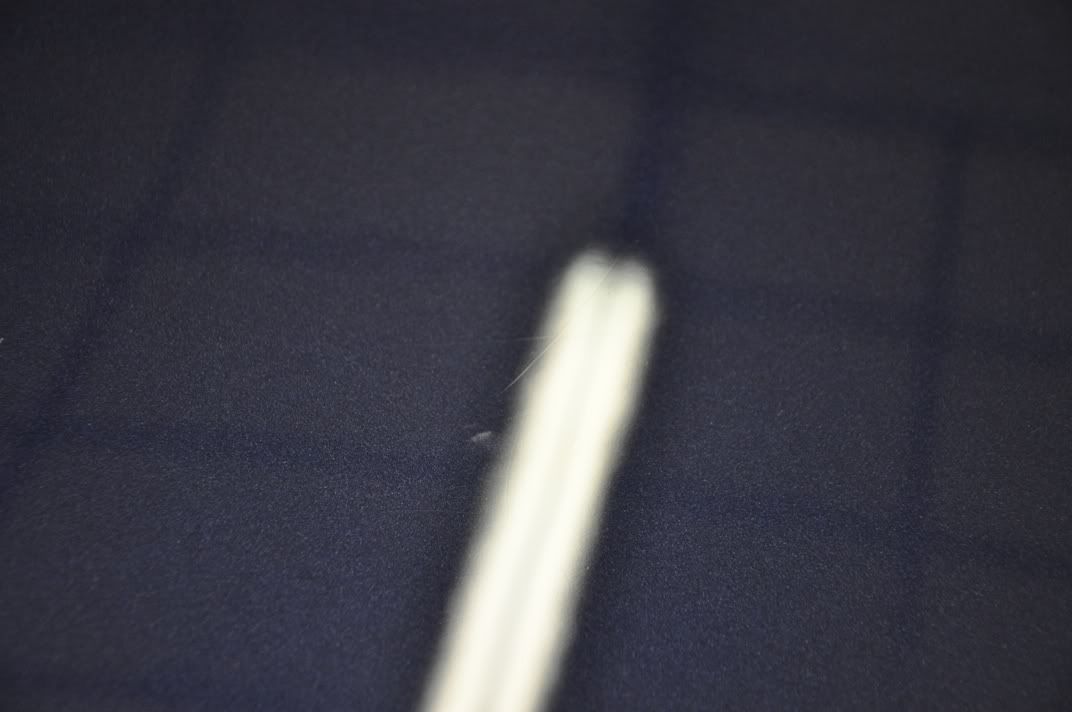
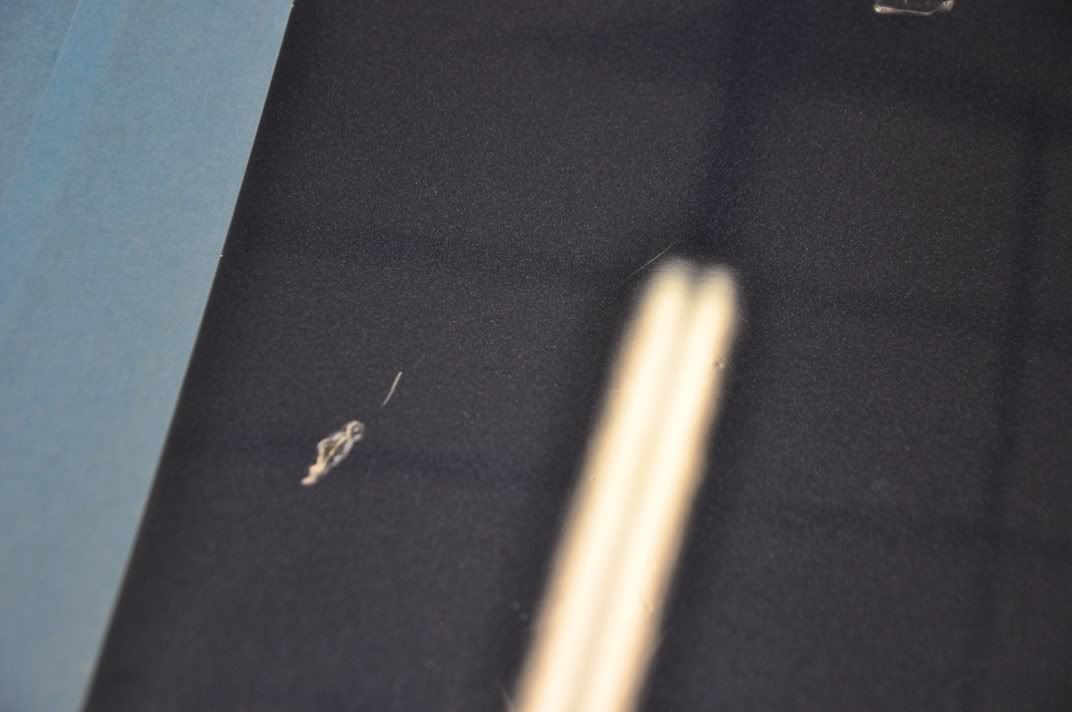
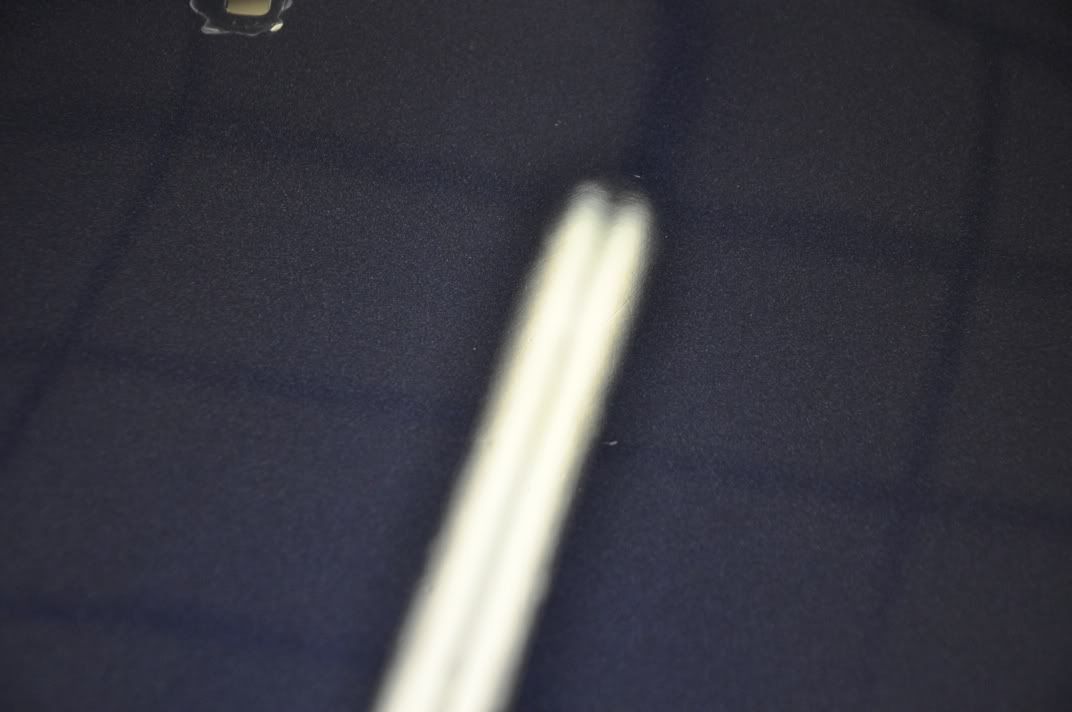
The Power Gloss seems to have dealt very well with the deep RDS, with little evidence of being there, however the paint still haze a hazy small peel effect to it, so the clarity is not great. Still to be refined of course. Under the Sun Gun:
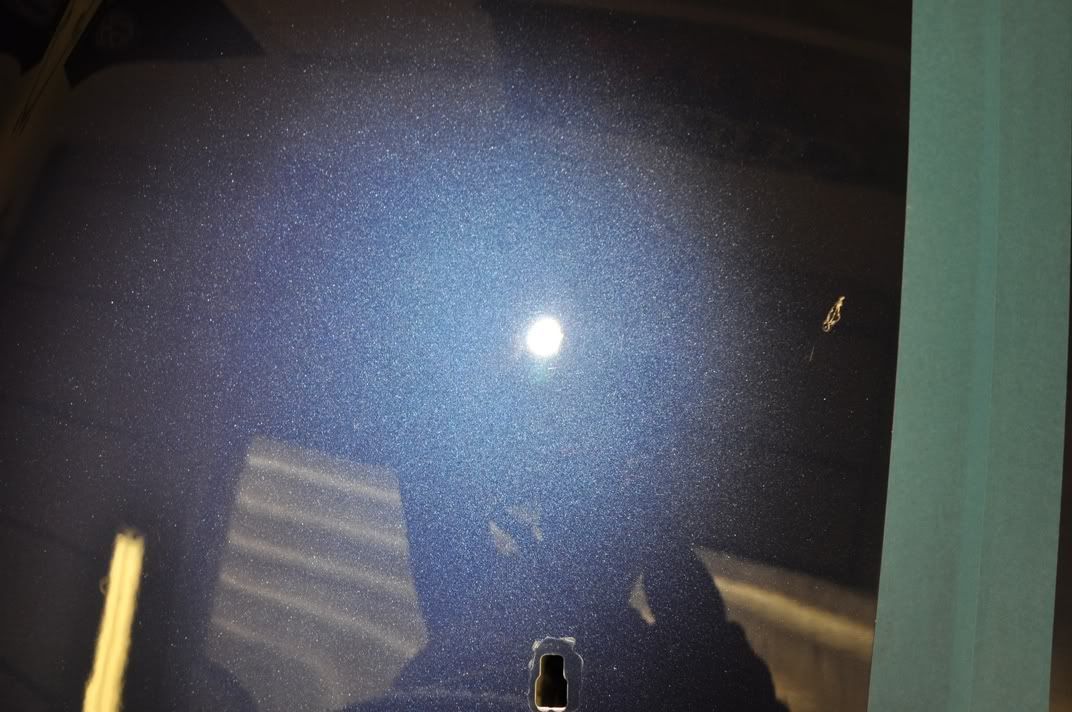
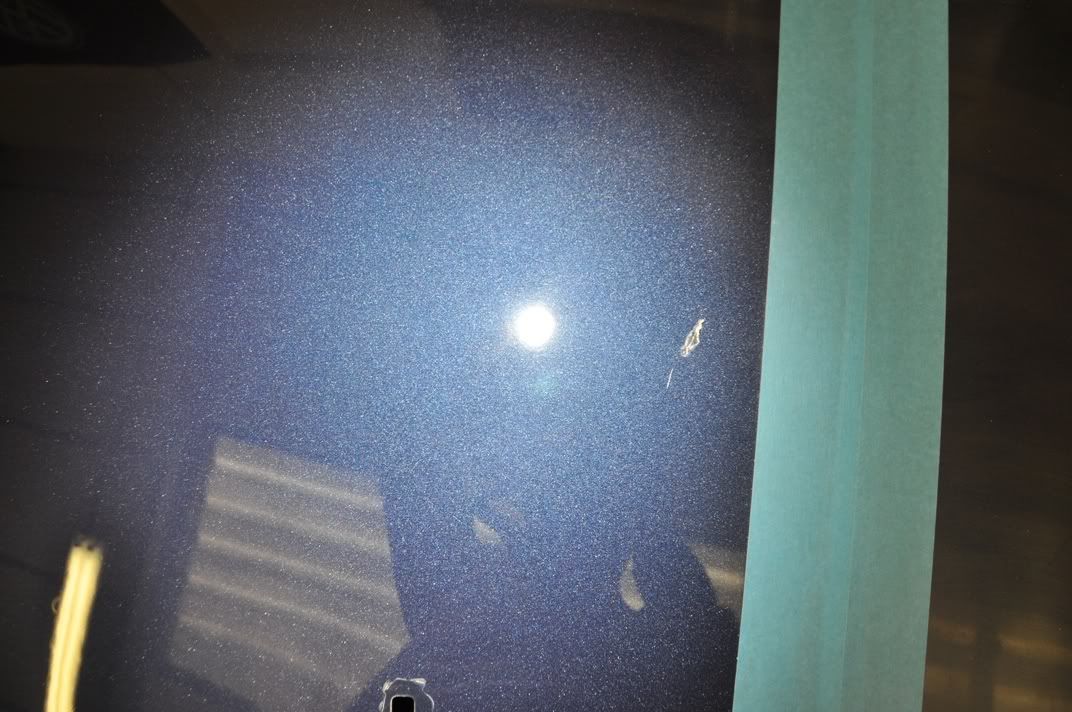
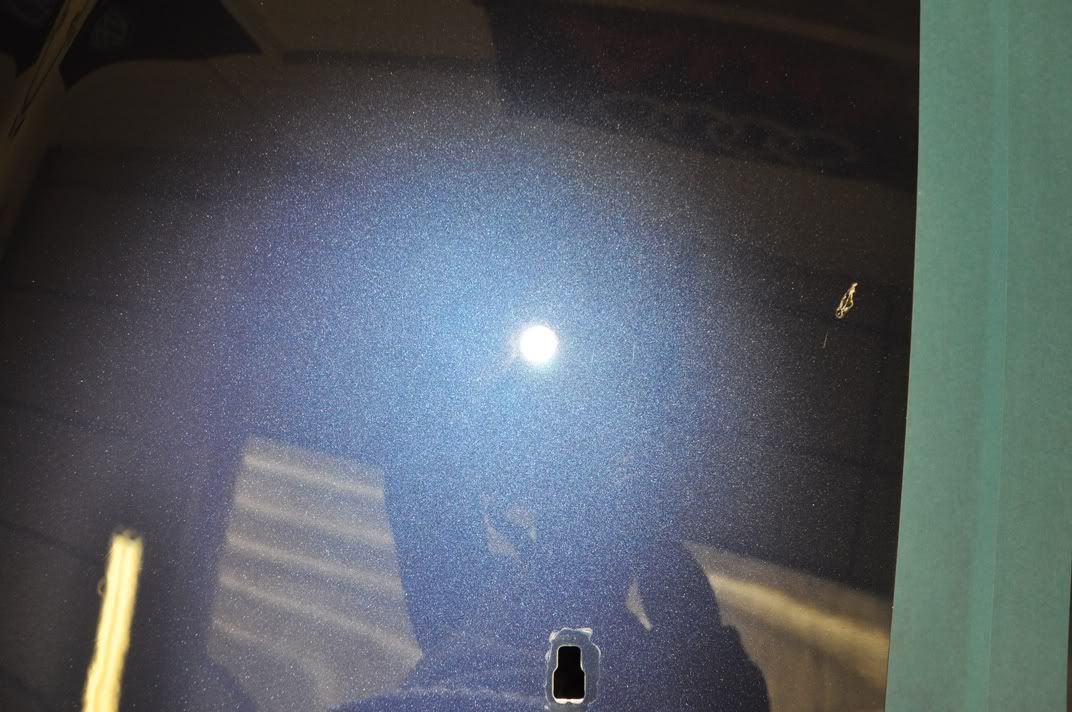
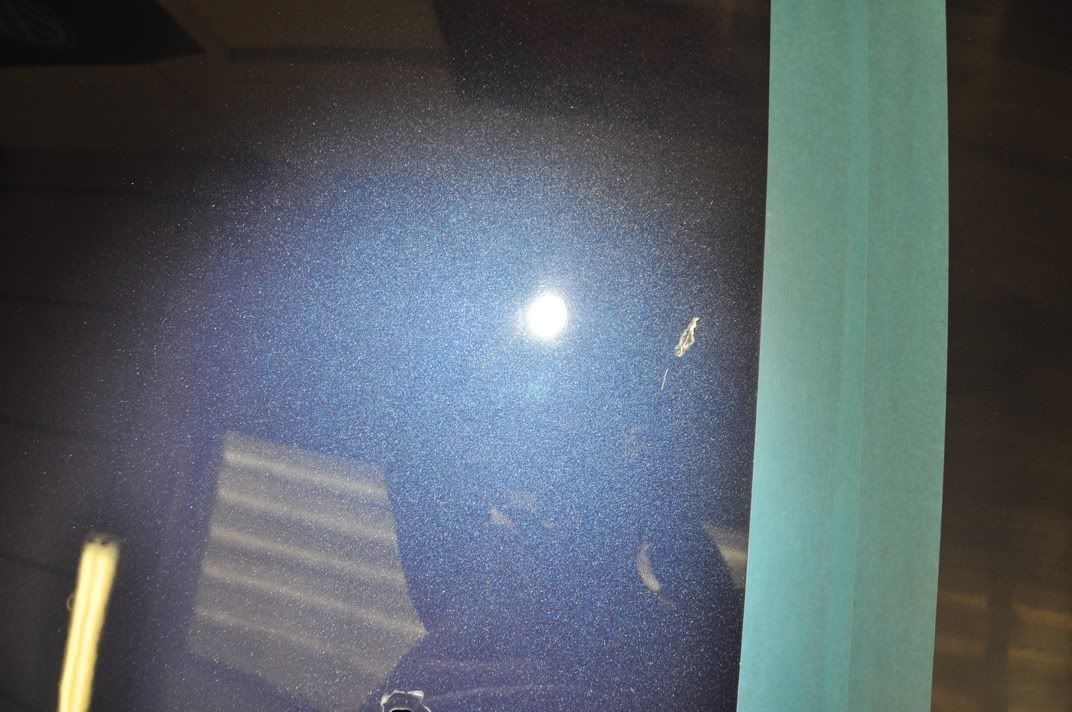
The finish looks good in terms of correction, with very little of any of the defects left (yes, a DA can correct by foam ). A hazyness under the light is to be expected from the cutting compound and pad combo, and will be refined. This sets the bar very high for the new system, as this set does show just how capable a DA with cutting foam can be!
). A hazyness under the light is to be expected from the cutting compound and pad combo, and will be refined. This sets the bar very high for the new system, as this set does show just how capable a DA with cutting foam can be!
Meguiars Correction Compound on Meguiars DA Microfibre Cutting Pad
So, with the bar set high, the new microfibre cutting pad and cutting compound were used to challenge it. The video below shows a typical set, longer than recommended by Meguairs in terms of passes and at 3.5 minutes this was pretty much the longest sets we would go for on the basis of what the product was achieving and the lack of any benefits of working longer. We will be investigating the effects of water to revive the product and comparing the set times in a later test, but this is how it was performing most strongly for us so far so we used this for the test. Spread at speed 2, and then worked at speeds 4 - 5 on a G220 V2. Note in the video the very slow hand movements (slower than with the foam) and the heavier pressure being used with the microfibre pads which we saw giving benefits in terms of correction:
DSC 0025 - YouTube
The end results of this, assessed first of all using the strip lights:

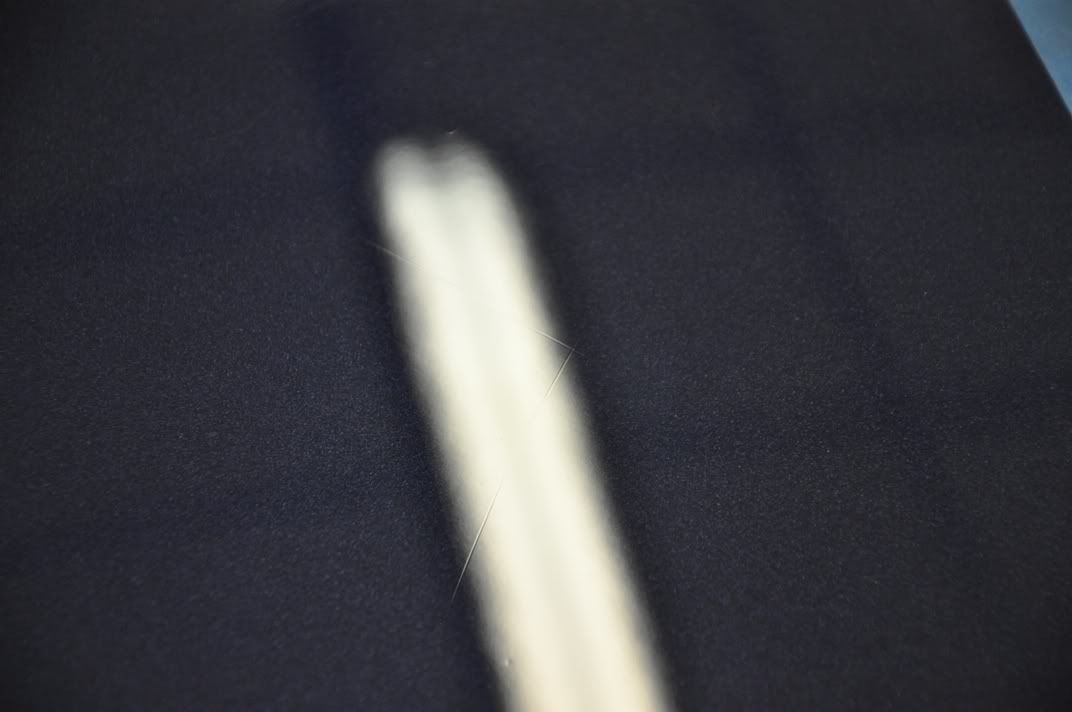
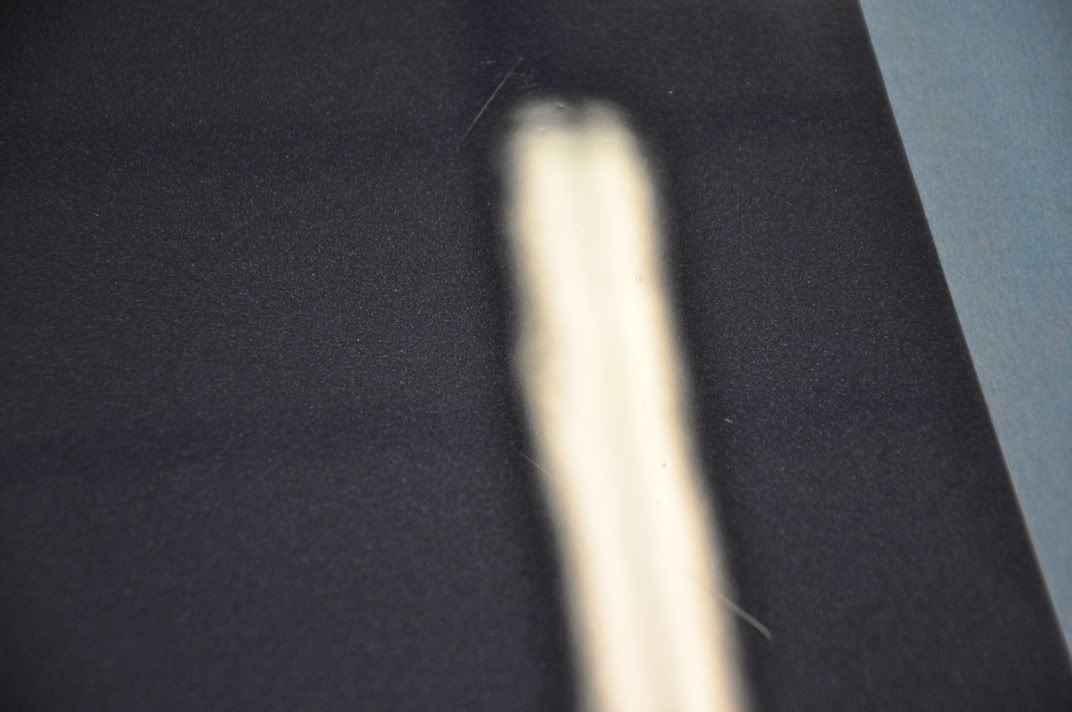
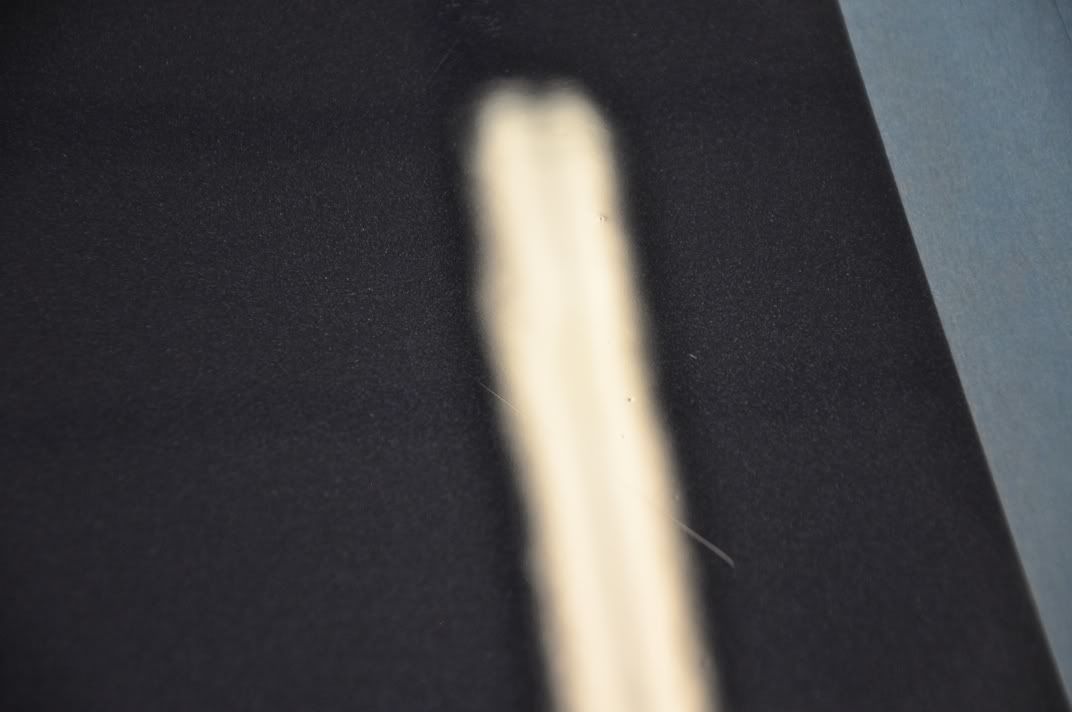
Interestingly here, in terms of the RDS we saw less correction than with foam! You can see the X more clearly, but what we also saw was the hazy small peel effect was better removed by the microfibre as if the microfibre system is better at "re-levelling" the paint while actually removing a little less paint than an aggressive foam combination. The correction is not greater, but rather is is of a different style. Under the Sun Gun:
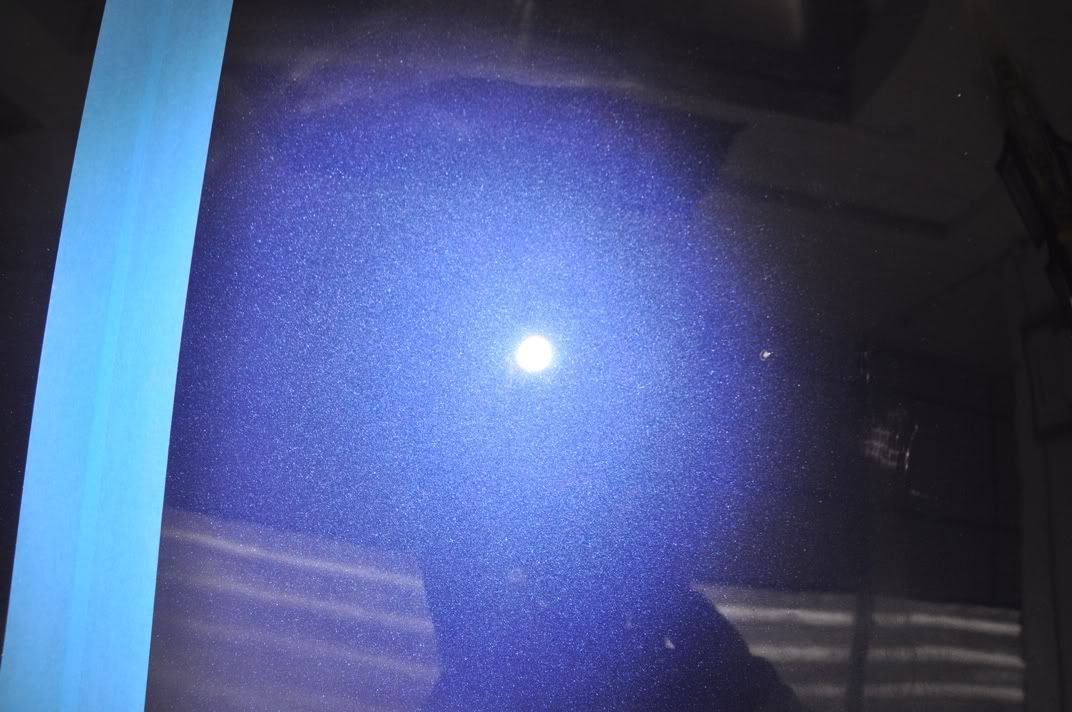
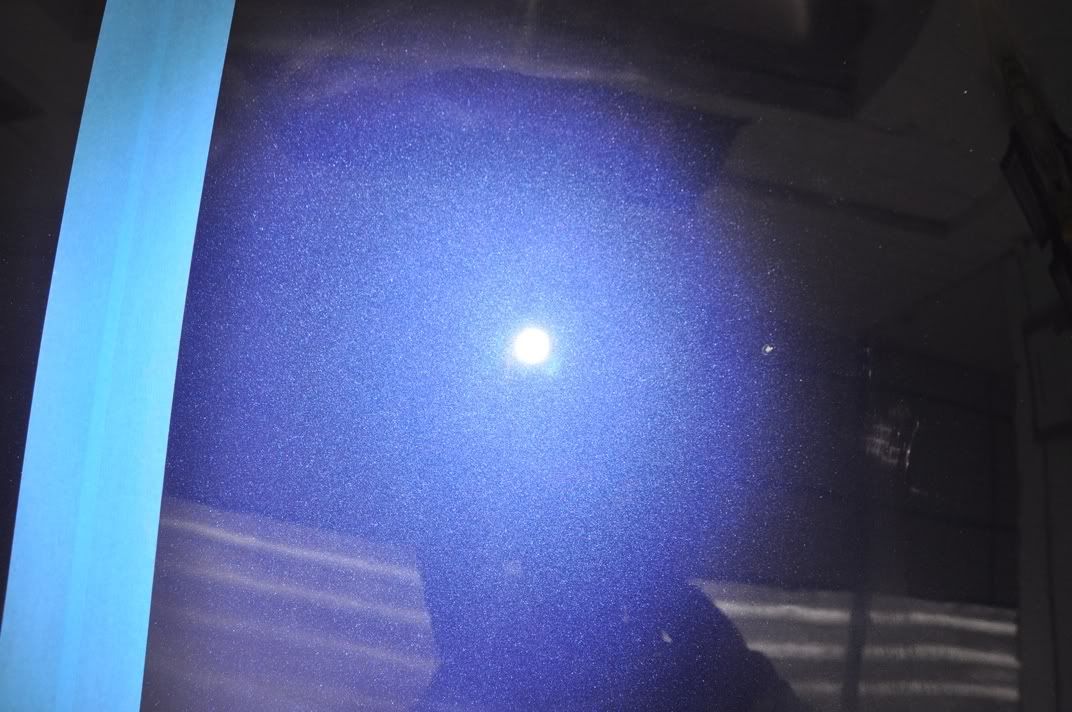
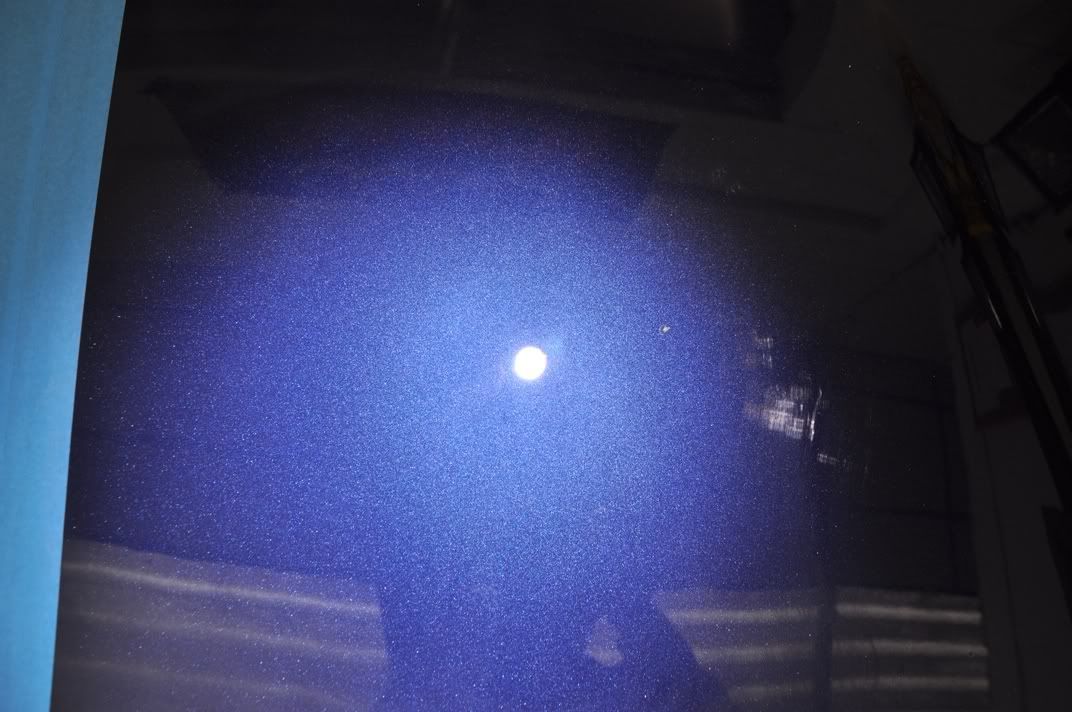

Correction here is excellent, most of the defects are removed and the only remaining were the deeper RDS. Again, this re-levelling shows as the finish seems to have greater clarity straight after this correction compound stage and the shorter sets would be a time saver.
Clarity Comparison
To investigate this idea a little further, we tried to show by photographs the differences in clarity we were seeing by eye between the Menzerna and Meguiars sides. First of all the Menzerna side:

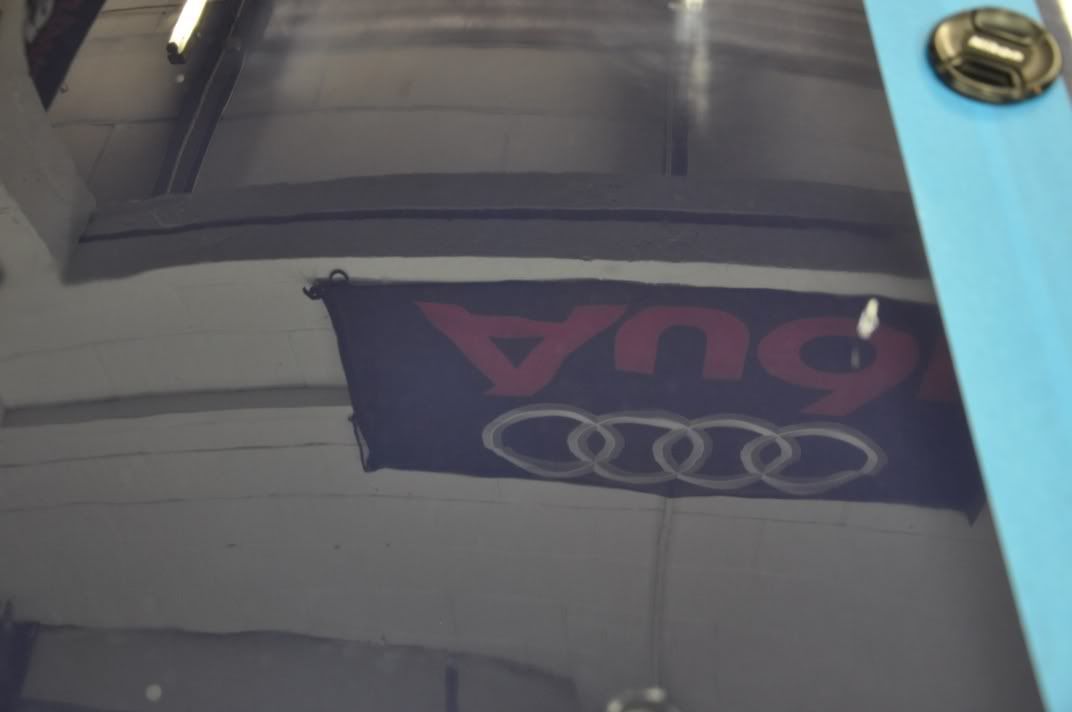
and the Meguiars side:
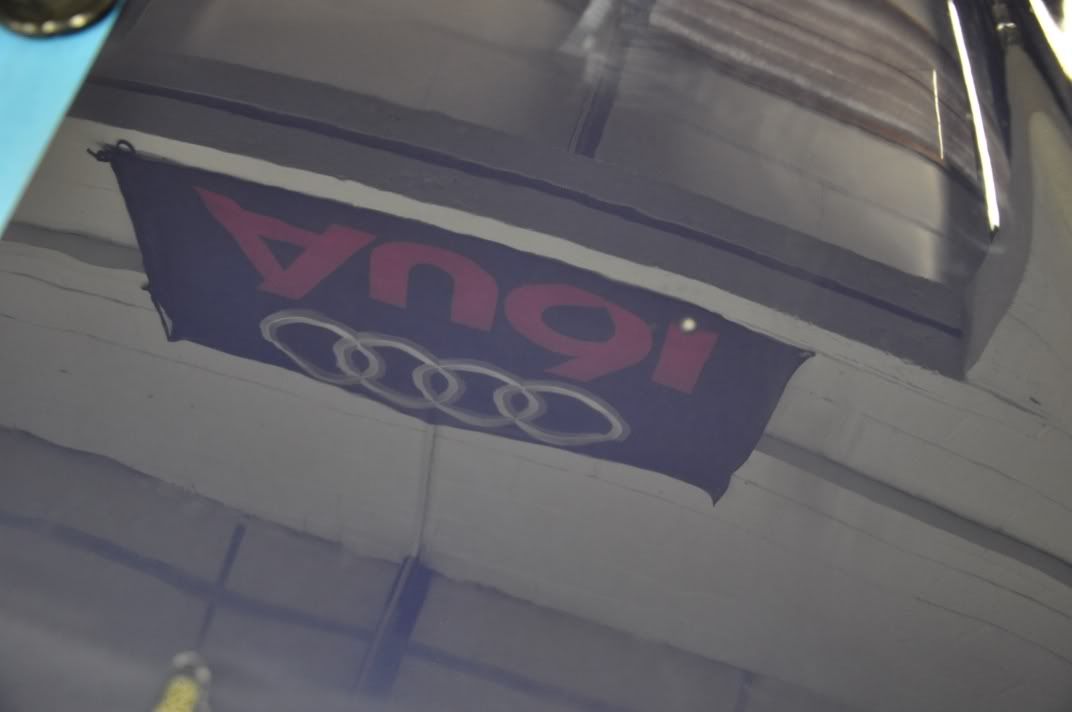

Arugably, the clarity on the Megiuars side seems to be superior with a sharper and clearer reflection being given. The Meguiars compounds seem to product a slightly sharper finish by making the paint more level than the Menzerna and foam combo which removed more paint to remove the deeper marks more successfully. The correction style is different, both effective but for deeper marks, foam still seems to be in front but for clarity, general correction and saving time, Meguiars has got the edge.
So - take one Mercedes blue bonnet, and marr it with a brush and some grit, and a key to set the challenge:





I think this sets the heavy correction challenge quite well - 2000 grit sanding marks, grit brush and deep RDS inflicted by a key, so a wide variety of severe marring to sort out.
Menzerna S100 Power Gloss on DRC1000 Yellow Cutting Pad
Traditionally, working by DA, heavy correction would be achieved using a cutting foam pad such as the DRC1000 Yellow, and an aggressive compound. Chosen here is Menzerna S100 Power Gloss, in our experience, Menzerna compounds seem to have the edge on a DA, the abrasives seem to suit the oscillating motion of the machine more than those of Fast Cut for example. The video below shows a typical correction set with Menzerna on foam, Gordon using speed 2 to spread and working up to speed 5 - 5.5 on the DAS-6 Pro and using moderate pressure to achieve the correction:
DSC 0012 - YouTube
Note: fast passes at slow speed to spread and then slow hand movements with the machine while breaking the compound down and an overall work time of circa 5 minutes.
This achieved the following results, first of all viewed under the striplight and the camera focussed on the paint surface to give a true indication of the level of correction of the deeper marks and RDS (look for the X marks the spot




The Power Gloss seems to have dealt very well with the deep RDS, with little evidence of being there, however the paint still haze a hazy small peel effect to it, so the clarity is not great. Still to be refined of course. Under the Sun Gun:




The finish looks good in terms of correction, with very little of any of the defects left (yes, a DA can correct by foam
Meguiars Correction Compound on Meguiars DA Microfibre Cutting Pad
So, with the bar set high, the new microfibre cutting pad and cutting compound were used to challenge it. The video below shows a typical set, longer than recommended by Meguairs in terms of passes and at 3.5 minutes this was pretty much the longest sets we would go for on the basis of what the product was achieving and the lack of any benefits of working longer. We will be investigating the effects of water to revive the product and comparing the set times in a later test, but this is how it was performing most strongly for us so far so we used this for the test. Spread at speed 2, and then worked at speeds 4 - 5 on a G220 V2. Note in the video the very slow hand movements (slower than with the foam) and the heavier pressure being used with the microfibre pads which we saw giving benefits in terms of correction:
DSC 0025 - YouTube
The end results of this, assessed first of all using the strip lights:




Interestingly here, in terms of the RDS we saw less correction than with foam! You can see the X more clearly, but what we also saw was the hazy small peel effect was better removed by the microfibre as if the microfibre system is better at "re-levelling" the paint while actually removing a little less paint than an aggressive foam combination. The correction is not greater, but rather is is of a different style. Under the Sun Gun:




Correction here is excellent, most of the defects are removed and the only remaining were the deeper RDS. Again, this re-levelling shows as the finish seems to have greater clarity straight after this correction compound stage and the shorter sets would be a time saver.
Clarity Comparison
To investigate this idea a little further, we tried to show by photographs the differences in clarity we were seeing by eye between the Menzerna and Meguiars sides. First of all the Menzerna side:


and the Meguiars side:


Arugably, the clarity on the Megiuars side seems to be superior with a sharper and clearer reflection being given. The Meguiars compounds seem to product a slightly sharper finish by making the paint more level than the Menzerna and foam combo which removed more paint to remove the deeper marks more successfully. The correction style is different, both effective but for deeper marks, foam still seems to be in front but for clarity, general correction and saving time, Meguiars has got the edge.

